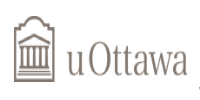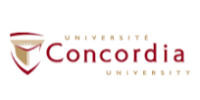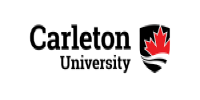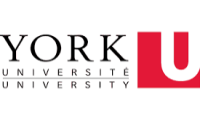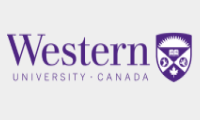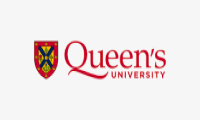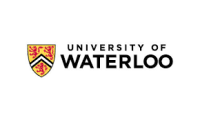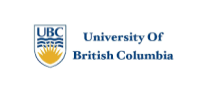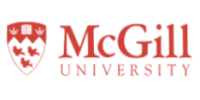Toronto eLearning School
School Calendar 2025-2026 – Student Handbook
Table of Contents
1.Our Mission
2.Program Overview
3.Student Registration
4.Course Prerequisites
5.Tests and Assignments
6.Final Exam
7.Attendance and Code of Conduct
8. Late and Missed Assignments Policy
9.Reports
10.Assessment Rubric for Online Collaboration
11.Parental Role
12.Hardware and Software Requirements
13.Guidance Support
14.Plagiarism
15.Appropriate Use of Technology
16.Program and Planning
17.Types of Secondary School Courses
18.Ontario Secondary School Diploma Requirements
19.What is a Credit?
20.Substitutions for Compulsory Courses
21.Community Involvement Requirement
22.Grade 10 Literacy Requirement
23. Online learning graduation requirement
24.Ontario Secondary School Certificate
25.Certificate of Accomplishment
26.Prior Learning Assessment and Recognition (PLAR)
27.Assessment and Evaluation
28.The Achievement Chart
29.Reporting on Student Achievement
30.Ontario Student Transcript (OST)
31.Full Disclosure and Course Withdrawal
32.Ontario Student Record (OSR)
33.Access to OSR
34.Courses available at Toronto eLearning School
35. Programs for Exceptional Studies
36. Reaching Ahead
37. the Ontario Curriculum Guidelines and Policy Links
38. Forms
1. Our Mission
To provide top quality, highly interactive and engaging online learning experiences for Ontario High School students. Toronto eLearning School recognizes the value and importance of completing a secondary education and is committed to providing an equitable and accessible learning platform that maximizes each student’s chances for success in their secondary school experience.
2. Program Overview
Toronto eLearning School offers students the opportunity to earn Ontario High School credits online using a combination of online video instruction, online assessments and evaluations, regular personal teacher-student support, and a variety of opportunities for student-student interactions. Our school seeks to maximize the flexibility of our students’ learning using the most modern and report effective learning technology and resources available, while carefully ensuring that all the expectations and policies of the Ontario Ministry of Education are completely met.
Students can enroll in one or more courses at any time of the year and can move through the material as slowly or as quickly as they like. The course instructor guides students through the curriculum using well designed and professionally presented online instructional videos and multimedia resources. Learning is asynchronous lessons, activities, assignments and tests can be accessed 24 hours a day, 7 days a week.
Students are strongly advised to complete a course within 4 months of starting it. Students who have not completed a course within 4 months need to apply to the principal to have their time extended and will be asked to provide reasons for the request. The school reserves the right to not extend the deadline for a course.
Instructors provide valuable feedback through assignments, regular weekly online conferencing sessions, discussion forums, and direct email. students interact and learn with one another through open conferencing times, discussion forums, peer reviews and assessments, and collaborative assignments and presentations. Students have direct access to their marks and can easily track their own progress.
All course material is online, no textbook is required. Assignments are submitted electronically. Tests are completed online at a time convenient for the student, and every course ends in a final exam which the student writes under the supervision of a proctor approved by Toronto eLearning School at a predetermined time and place. The final mark and report card are then forwarded to the student’s home school.
Students must achieve the Ministry of Education learning expectations of a course and complete 110 hours of planned learning activities, both online and offline, in order to earn a course credit.
The chart below indicates some general examples of online and offline activities, but each course will involve different specific activities.
|
Online Learning Activities |
Offline Learning Activities |
|
Watching instructional videos |
Reading materials for course |
|
Watching additional resources videos |
Studying instructional material |
|
Completing online timed assignments |
Practicing skills |
|
Contributing to Forums |
Completing assignments |
|
Uploading video presentations |
Completing essays |
|
Communicating with instructor |
Preparing presentations |
|
Participating in live conferences |
Reviewing for tests and exams |
|
Practicing through online quizzes |
Researching topics on internet |
|
Reviewing peer submissions |
|
|
Assessing peer presentations |
|
|
Completing online timed exam |
Students must keep a learning log throughout their course which outlines the activities they have completed and their total learning hours.
Students are expected to access and participate actively in course work and course forums on a regular and frequent basis. This interaction with other students is a major component of every course and there are minimum requirements for student communication and contribution.
Toronto eLearning School online courses require planning, self-discipline and mature organizational and time-management skills. These essential learning skills, developed through successful online study, will provide students with definite advantages in their future academic and professional lives.
3. Student Registration
Student enrolment in TES is open and continuous. Registration is available online 24 hours a day through www.TorontoeSchool.com. Proof of Ontario residency in the form of an OEN number, birth certificate, transcript, or report card from an Ontario School is required to complete registration.
If the student has an existing IEP (Individual Education Plan), then a copy of this IEP must accompany registration. The school will then attempt to address these learning expectations through appropriate accommodations within the online course.
4. Course Prerequisites
Students must submit proof that they have successfully completed the prerequisite for any course in which they intend to enroll after they have registered.
Students who do not have a course prerequisite yet and can provide reasonable evidence of prior equivalent study or work experiences may apply for a prerequisite waiver. Students will be required to submit their school grades and all relevant work/school experience before their request is reviewed. The final decision to waive a prerequisite is determined by the Principal.
5. Tests and Assignments
The number of tests and assignments within a course can vary, but all together will always constitute 70% of a student’s final mark. As well, the type of tests assignments vary and may include labs, projects, discussion board participation, short answer questions as well as essays, audio recordings and video presentations. Assignments can be uploaded online or scanned and attached as an email. Video presentations by students will be uploaded to the private TES YouTube channel.
Students are given suggested timelines in each of their courses to help them complete the course credit in a reasonable amount of time. However, students may establish their own schedule for regularly submitting assignments and writing tests. Course instructors return assignments with
grades and comments consistent with the assessment and evaluation policies of the Ontario Ministry of Education.
6. Final Exam
All courses will have a final examination or evaluation worth 30% or a student’s final mark, unless otherwise agreed to by the Principal.
Ten days prior to the preferred examination date, students will submit a supervisor approval form. The selected supervisor must be approved by TES before their exam date can be finalized.
Examinations must take place in a professional environment, they may not be held at a private residence. Acceptable supervisors require a work email address and may be asked to produce a copy of their diploma or certificate of qualification or practicing license in order to validate an exam application.
Acceptable supervisors include Ontario Certified Teacher, lawyer, registered family physician, registered nurse, government social worker, registered psychologist and professional registered counsellor. Relatives, supervisors without a professional email address and hired tutors will not be approved to proctor a student exam. The approved supervisor is sent a password that is to be entered at the time of the exam allowing the student access. The supervisor ensures the security and integrity of the exam process.
Students who have not submitted acceptable proof of prerequisite can not take the exam. After the exam has been written no assignments can be submitted and no tests can be taken, and all outstanding work will receive a mark of zero.
7. Attendance
Student participation and online attendance is monitored by each course instructor and the learning management software. It is important that students spend regular and significant amounts of time logged into their courses if they wish to be successful in their courses. Due to the continuous entry model of our eLearning school, there is no semester timetable to follow. It is expected that a typical online course will take approximately 4 months for the student to complete. Toronto eLearning School expects students to log into their course weekly (assuming a minimum of 6 hours per week online participation), but this time may start or end arbitrarily.
Inactivity beyond 2 weeks will trigger an automatic email reminder, 3 weeks of inactivity will be recorded as an absence on report card, and student will be contacted by the course instructor for an explanation. In the case where the student has not logged in to their course for over one month both student and parent will be contacted. Continued absence from the course will result in a credit not being awarded and the student removed from the course.
Tracking Attendance:
- Logs: The LMS system will track the time spent on the course.
- Assignment: Timely submission of assignments will be monitored by online instructor.
- Discussion: Online participation of discussion forum will be tracked.
- Learning Progress: Progress through course lessons will be checked.
Code of Conduct
Toronto eLearning School is a place of learning and as such, there must be an atmosphere based on mutual respect. Students are expected to be courteous and to respect the personal rights and feelings of others. Insults, disrespect, and other hurtful acts disrupt learning and teaching in a school community. Toronto eLearning School is committed to the protection and well-being of all students and staff. As part of this commitment, our school has a zero tolerance policy on harassment, intimidation, threatening behaviors (verbal or otherwise) and/or conduct injurious to the moral tone of the school. Profanity, harassment or aggressive behaviors are not acceptable and may result in student suspension or expulsion. Threats, distasteful remarks, abuse of any kind or harassment by any individual which impairs the health and welfare of any student or staff member is to be reported to the Principal immediately.
Any use of any Learning Management System (LMS) tool within course for any other purpose other than the intended educational purpose
is prohibited. If the LMS is used inappropriately or in a prohibited manner, the Principal reserves the right to terminate the registration or suspend the user. There is the possibility of further disciplinary action including legal prosecution, if the appropriate laws, regulations, or contracts deem it necessary. The security of the online environment is only as effective as the practices of its users. Therefore, it is important that the student user never attempt to access unauthorized material or to impersonate another user. Any attempt to vandalize, harm or destroy data of another user is prohibited. Any attempt to vandalize the data of the course or school is also prohibited.
8.Late and Missed Assignments Policy
At Toronto eLearning School, students are encouraged to complete their assignments in a timely manner. However we recognize that online flexible, asynchronous learning model allows students to work at their own pace. The following outlines expectations for assignment completion and procedure for late and missed assignments in a non-deadline-based environment.
- Students are encouraged to make a study plan to complete a course in 4-6 months.
- Students are encouraged to finish and submit assignments regularly.
- Online instructor may provide suggested timelines to help guide students, even though there is no specific deadline for assignment submission. Teachers will provide feedback on completed work to support ongoing learning.
- Students have to make sure that there are no missed assignments before taking the final exam, otherwise the missed assignments will be marked Zero.
- Online teacher will monitor student’s progress and may reach out if a student has not submitted work for a period of time to offer support and encouragement.
- Teachers will work with students to keep up with the coursework and offering additional support if needed.
9. Reports
Students receive a midterm report when approximately 50% of the course material has been completed. Teachers at TES use criterion-referenced assessment and evaluation; student work is assessed and evaluated in a balanced manner with reference to established criteria for the four levels of achievement that are standard across Ontario, rather than by comparison with work done by other students, or through the ranking of student performance.
10. Assessment Rubrics for Online Collaboration, Discourse, and Knowledge Building
Communication and discussion are essential for successful learning across all disciplines. TES courses provide for a variety of assessment
strategies over the duration of the course that may include:
- Contributions to online discussion groups
- Completion of online assignments
- Portfolio submissions
- Projects and video presentations
- Peer review of student submissions or presentations
Instructors use the Assessment Rubric for Online Collaboration presented below as a reference to help them guide the learning, assessment and evaluation of their students.
| Indicators | Demonstrates Exemplary Progress/Performance | Displays Strong Progress/Performance | Demonstrates Adequate Progress/Performance | Lacks Adequate Progress – Needs Practice/Support |
| Contribution (New Notes) |
Timely, thoughtful, insightful. Initiates extended thinking or original ideas on a regular basis (i.e. almost daily). Builds toward the knowledge acquisition and learning of the greater community. http://www.bostonballet.org/swanlake/ |
Fairy timely and thoughtful. Initiates some new ideas for discussion on a regular basis (i.e. 2-3x/wk). Often builds toward the advancement of the community. |
Thoughtful responses to mostly existing discussions. Sometimes initiates new ideas on a more sporadic basis (i.e. 1-2x/wk). Sometimes builds toward the advancement of the community. |
Few thoughtful contributions to existing discussions. Rarely to never initiates new ideas. Contributes less frequently, may lurk too often, contributes irregularly. |
| Interaction (Build-Ons/ New Notes) Methodology may vary- deconstruction, critique, exemplars, research, opinion, experience, probing… |
Regular interaction with peers and builds-on ideas to advance thought or deepen the knowledge. Listens to varied views and provides reflective, constructive and/or meaningful i.e. John your reflection seemed to show… |
Usually interacts with peers and builds-on by extending ideas while listening. Always constructive, reflective and meaningful.i.e. John, I had a similar situation… |
Usually interacts with peers by responding to questions posed or when prompted. Somewhat reflective and constructive or meaningful.i.e. Good Job John… |
Rarely interacts with peers or responds to questions posed. Limited involvement with questions or ideas. May lurk too often.i.e. Logs in to read note |
| Inquiry (Build-Ons/New Notes) |
Asks questions that reflect and extend thinking on the topic or learning for self and the community. |
Asks questions which reflect and/or clarify. Sometimes extends thoughts for self and the community. |
Asks relevant questions which enhance the learning of self and others. |
Seldom asks relevant questions. |
| Connecting Theory with Resources and/or Personal Experiences |
Refers and elaborates on required readings. Provides links and connects theory to other resources/research as well as personal experiences |
Often refers and elaborates on required readings. Often provides links and connects theory to other resources and/or personal experiences |
Often refers to required reading. Less often connects theory with other resources and/or personal experiences. |
Seldom refers to required reading and little effort to connect theory with other resources or personal experiences. |
| Understanding Core Course Concepts and Content | Thorough understanding of course content and concepts. Responses reflect detailed, comprehensive and broad shape comments on material and processes. |
Good understanding of content and key course concepts. Responses reflect comprehensive comments on material and processes. |
Some understanding of content and key course concepts. Responses tend to reflect broad approach to material and processes. |
Limited understanding of content and key course concepts. |
| Social Skills | Always encouraging, positive, sensitive, friendly tones. Feedback, views and opinions are constructive, meaningful and collaborative. Netiquette applied |
Usually encouraging, positive, sensitive, friendly tones. Feedback, views and opinions are constructive, meaningful and collaborative. Netiquette applied. |
Fairly encouraging, positive, sensitive, friendly tones but may struggle with meaningful and constructive comments or feedback at times. |
Little effort to be sensitive, positive and encouraging and/or allow for meaningful or constructive feedback. May verge on the border of inappropriate commentary. |
| Language | Almost always clear, precise, relevant, organized, free of major language errors |
Usually clear, precise, relevant, organized, free of major errors |
Fairly clear, precise, relevant, organized, some language errors on a consistent basis |
Often unclear, or unorganized, may be irrelevant to topic at hand and/or responses regularly contain language errors. |
| Support and Contribution to the Collective | On a continuous basis, will quickly support and/or offer time to help the learning community with extra curricular items (i.e. technical help, humor, building rapport) |
Regularly supports and/or offers time to help the learning community with issues and items that come up. |
Sometimes supports the learning community with issues and items that come up. |
Rarely or never offers support to learning community with issues and items that come up. |
11. Parental Role
Parents are encouraged to monitor and support the learning of their children by helping them create a studying schedule, and checking on assignment completion and submission. Parents are free to contact the school with any comments or concerns.
12. Hardware and Software Requirements
Students should have access to a stable high-quality internet connection and an up to date laptop or desktop computer with a microphone and video camera.
Recommended software includes Adobe Acrobat Reader and word processor and spreadsheet applications such as Microsoft Word and Excel.
Students will need a Gmail account to access Google+ Hangouts for video conferencing and whiteboard applications.
Students registered in Mathematics courses may need access to a scanner or camera to submit assignments with complex mathematical notion.
13. Guidance Support
TES students are encouraged to direct any specific questions regarding course selection, marks or general guidance support questions through email.
The Guidance Department is dedicated to the success and well-being of every student at Toronto eLearning School. Guidance and career education can help you find the right path for a successful experience in high school and post secondary school.
14. Plagiarism
Plagiarism is a serious academic offence. Students must acknowledge visual or written sources when using the words or the ideas of any other person, or group of persons, for any assignment or project. The first offence of any work that is concluded as being plagiarized will result in an academic warning. The teacher will notify the office of the offence and the work will be redone by the student. Upon a second offence, the work will be given a mark of zero. A third offence will result in a zero for the submitted work and an academic review by the principal which may result in removal from the course without refund. The parents/guardians will be notified.
Plagiarism includes presenting the work of other students as your own.
15. Appropriate Use of Technology
In the case that a student is found to use technology in an unacceptable manner, the student and parent (if under the age of 18) will be contacted. The consequences of such actions may result in the removal of the student from the course without refund. Unacceptable behaviors may include, but may not be limited to the following:
- creation and transmission of offensive, obscene, or indecent document or images;
- creation and transmission of material which is designed to cause annoyance, inconvenience or anxiety;
- creation of defamatory material;
- creation and transmission that infringes copyright of another person;
- transmission of unsolicited commercial or advertising material and deliberate unauthorized access to other services accessible using the connection to the network/Internet.;
- causing technical staff to troubleshoot a problem for which the user is the cause, corrupting or destroying other user’s data;
- violating the privacy of others online;
- using the network in such a way that it denies the service to others;
- continuing to use software or other system for which the user has already been warned about using;
- and any other misuse of the network such as introduction of viruses;
16. Program and Planning
In Ontario, students are required to stay in secondary school until they reach the age of eighteen or until they obtain an Ontario Secondary School Diploma (OSSD). TES understands the importance and value of completing a secondary education and is committed to reaching every student and helping them achieve a successful outcome form their secondary school experience.
Below is a summary and discussion of the relevant policies set out in Ontario Schools, Kindergarten to Grade 12: Policies and Program Requirements, 2011 (OS) as set out by the Ministry of Education.
Available online: https://www.ontario.ca/document/ontario-schools-kindergarten-grade-12-policy-and-program-requirements-2024
17. Types of Secondary School Courses
The curriculum is organized into several types of courses, intended to enable students to choose courses suited to their strengths, interests, and goals. In Grades 9 and 10, three types of courses are offered: academic, applied, and open. Courses in Grades 11 and 12 are designed to prepare students for a postsecondary destination which may include university, college, apprenticeship training, or the workplace. A credit is granted by the Principal on behalf of the Ministry of Education in recognition of the successful completion of the expectations of a 110-hour course that has
been developed or approved by the Ministry of Education.
The common course code of all courses consists both of a five code character and a course title component, as designated by the Ministry of Education and Training in Ontario:
For example: MPM2D Principles of Mathematics
| MPM | 2 | D | |
| Course Descriptor |
Grade of Course |
Course Type |
|
| MTH MPM2 MCR ENG BOH |
1- Grade 9 2 – Grade 10 3 – Grade 11 4 – Grade 12 |
W D U C M O |
De-streamed Academic University College University or College Open |
Outlines of Courses of Study for all courses offered at Toronto eLearning School can be found online at https://torontoelearningschool.com/courses/all-courses/
Grades 9 and 10
De-streamed “W”: A new de-streamed math course, which replaces the Grade 9 academic and applied courses, is being taught in Ontario’s publicly funded schools beginning in September 2021.
It is designed to provide a learning experience for all students to engage in rich complex mathematics, including new areas like coding, data literacy, and financial literacy. This course also emphasizes connections among mathematical concepts, real-life applications and students’ lived experiences.
Academic “D”: Academic courses develop a student’s knowledge base and skills through the study of theory and abstract problems. These courses focus on the essential concepts of a subject and explore related concepts as well. They incorporate practical applications as appropriate.
Open “O”: Open courses are the only type of course offered in most subjects other than those listed above. They are designed to prepare students for further study in a subject, and to enrich their education generally. Open courses comprise a set of expectations that are appropriate for all students.
Students in Grades 9 and 10 will make the choice between De-streamed, academic, applied and open courses primarily on the basis of their strengths, interests, and needs. Their parents or guardians, the Principal and teachers, will help them make their choices, which will be reflected in their Annual Education Plan. Grade 10 academic courses prepare students for Grade 11 University or College preparation courses; Grade 10 applied courses prepare students for Grade 11 College or Workplace preparation courses.
Changing Course types: Students who are successful in any De-streamed course in Grade 9 will have the opportunity to enter either the academic or applied course in the same subject in Grade 10.
Grades 11 and 12 Courses
In Grades 11 and 12, students will choose from among destination-related course types: university preparation, university/college preparation, college preparation, workplace preparation, and open courses. Students will make their choices based on their interest, achievement, and career goals. Prerequisites are specified for many of the courses offered in Grades 11 and 12. These prerequisites are identified in the Course of Study document for each course.
University preparation “U” courses are designed to equip students with the knowledge and skills they need to meet the entrance requirements for university programs.
University/College preparation “M” courses are designed to equip students with the knowledge and skills they need to meet the entrance requirements for specific programs offered at universities and colleges.
College preparation “C” courses are designed to equip students with the knowledge and skills they need to meet the requirements for entrance to most college programs or for admission to apprenticeship or other training programs.
Workplace preparation “E” courses are designed to equip students with the knowledge and skills they need to meet the expectations of employers, if they plan to enter the workplace directly after graduation, or the requirements for admission to certain apprenticeship or other training programs.
Open “O” courses are designed to broaden students’ knowledge and skills in subjects that reflect their interests and to prepare them for active and rewarding participation in society. They are not designed with the specific requirements of universities, colleges, or the workplace.
Changing Course types:
Changing course types in grades 11 and 12 will require the completion of the appropriate prerequisite. In some cases the student my request that the Principal waive the prerequisite. The decision to waive the prerequisite will be made by the Principal in consultation with the student and parents.
Cooperative Education and Other Workplace Experiences
Cooperative education programs allow students to earn secondary school credits while completing a work placement in the community.
These programs complement students’ academic programs and are valuable for all students, whatever their postsecondary destination. A cooperative education program comprises, at a minimum, one cooperative education course and its related course, on which the cooperative education course is based. Any course from an Ontario curriculum policy document or any ministry-approved locally developed course may serve as the related course for a cooperative education program.
Toronto eLearning School does not operate a Cooperative Education Program at this time.
18. Ontario Secondary School Diploma Requirements
What you need to earn an Ontario Secondary School Diploma depends on the year you started Grade 9.
If you started Grade 9 in 2023 or in prior years, you must earn:
- 18 compulsory credits
- 12 optional credits
- the literacy requirement
- at least 2 online learning credits
If you started Grade 9 in 2024 or in later years you must earn:
- 17 compulsory credits
- 13 optional credits
- the literacy requirement
- at least 2 online learning credits
Everyone needs 40 hours of community involvement activities (volunteering) to get their high school diploma.
If you started Grade 9 in or before Fall 2023
If you started Grade 9 in 2023 or earlier, you need the following to get your OSSD.
Compulsory credits
You need the following 18 compulsory credits to get your OSSD:
- 4 credits in English (1 credit per grade)
- 3 credits in mathematics (at least 1 credit in Grade 11 or 12)
- 3 credits for group 1, 2 and 3 courses (1 credit in each group)
- 2 credits in science
- 1 credit in Canadian history (Grade 10)
- 1 credit in Canadian geography (Grade 9)
- 1 credit in the arts
- 1 credit in health and physical education
- 1 credit in French as a second language
- 0.5 credit in career studies
- 0.5 credit in civics and citizenship
The following also apply to compulsory credit selections.
- You can use the Grade 11 English: Understanding Contemporary First Nations, Métis and Inuit Voices course to meet the Grade 11 English compulsory credit requirement.
- You can use the Grade 9 Expressions of First Nations, Métis, and Inuit Cultures course to meet the compulsory credit requirement in the arts.
Group 1, 2 and 3 compulsory credits
Of the 18 compulsory credits, you must complete 1 from each of the following groups:
Group 1: 1 additional credit in English or French as a Second Language**, or a Native language, or a classical or an international language, or social sciences and the humanities (family studies, philosophy, world religions), or Canadian and world studies, or guidance and career education, or cooperative education***
Group 2: 1 additional credit in health and physical education, or the arts, or business studies, or French as a Second Language**, or cooperative education***
Group 3: 1 additional credit in science (Grade 11 or 12) or technological education (Grades 9 to 12), or French as a Second Language**, or computer studies, or cooperative education***
The following conditions apply to compulsory credit selections from the above 3 groups.
- In groups 1, 2, and 3, you can count a maximum of 2 credits in French as a second language as compulsory credits, 1 from group 1 and 1 from either group 2 or group 3.
- If you have taken Native languages in place of French as a second language in elementary school, you may use a Level 1 or 2 Native languages course to meet the compulsory credit requirement for French as a second language.
- You can count a maximum of 2 credits in cooperative education as compulsory credits from any of the above 3 groups.
The Langue des signes québécoise langue seconde course is only available in French-language schools.
Optional credits
You must earn 12 optional credits by successfully completing courses from your school’s program and course calendar.
Optional credits may include up to 4 credits earned through approved dual credit programs.
If you started Grade 9 in Fall 2024 and after
Note: Starting in September 2025, you must earn a new financial literacy graduation requirement as part of your compulsory Grade 10 mathematics course. You will need to achieve a mark of 70% or higher to pass this new requirement and earn your high school diploma.
If you started Grade 9 in 2024 or in later years, you need the following to get your OSSD.
Compulsory credits
You need the following 17 compulsory credits to get your OSSD:
- 4 credits in English (1 credit per grade)
- 3 credits in mathematics (Grade 9, Grade 10 and 1 credit in Grade 11 or 12)
- 2 credits in science
- 1 credit in technological education (Grade 9 or Grade 10)
- 1 credit in Canadian history (Grade 10)
- 1 credit in Canadian geography (Grade 9)
- 1 credit in the arts
- 1 credit in health and physical education
- 1 credit in French as a second language
- 0.5 credit in career studies
- 0.5 credit in civics and citizenship
- 1 credit from the STEM-related course group
The following apply to compulsory credit selections.
- You can use the Grade 11 English: Understanding Contemporary First Nations, Métis and Inuit Voices course to meet the Grade 11 English compulsory credit requirement.
- You can use the Grade 9 Expressions of First Nations, Métis, and Inuit Cultures course to meet the compulsory credit requirement in the arts.
STEM-related course group
Of the 17 compulsory credits, you must complete 1 from the following group:
- business studies
- computer studies
- cooperative education
- mathematics (in addition to the 3 compulsory credits currently required)
- science (in addition to the 2 compulsory credits currently required)
- technological education (in addition to the 1 compulsory credit required)
Optional credits
You must earn 13 optional credits by successfully completing courses from your school’s program and course calendar.
Optional credits may include up to 4 credits earned through approved dual credit programs.
19. What is a credit?
A credit is granted in recognition of the successful completion of a course that has been scheduled for a minimum of 110 hours. Credits are granted by the principal on behalf of the Minister of Education and Training for courses that have been developed or approved by the ministry. A half-credit may be granted for each 55-hour part of a 110-hour ministry developed course. Half-credit courses must comply with ministry requirements as outlined in the curriculum policy documents.
TES students’ learning is self directed so the number of hours scheduled for the course will be determined by logging the number of hours the student is logged on to the learning site and the number of hours spent on course work, discussion, assignments, tests, projects and presentations.
20. Substitution for Compulsory Courses
In order to allow flexibility in designing a student’s program and to ensure that all students can qualify for the Ontario Secondary School Diploma (OSSD), substitutions may be made for a limited number of compulsory credit courses. The school principal may replace up to three compulsory courses (or the equivalent in half courses) with courses from the remainder of those that meet the compulsory credit requirements. In all cases, however, the sum of compulsory and optional credits will not be less than thirty for students aiming to earn the OSSD and not less than fourteen for
those aiming to earn the Ontario Secondary School Certificate. Substitutions will be made to promote and enhance student learning or to meet special needs and interests.
The decision to make a substitution for a student will be made only if the student’s educational interests are best served by such substitution. If a parent or an adult student requests a substitution, the principal will determine whether or not a substitution should be made. The principal may also initiate consideration of whether a substitution should be made. The principal will make his or her decision in consultation with the parent or adult student and appropriate school staff. Each substitution will be noted on the student’s Ontario Student Transcript. See the end of this document to view a sample form.
21. Community Involvement Requirement
Students must complete a minimum of 40 hours of community involvement activities as part of the diploma requirements. The purpose of this requirement is to encourage students to develop an awareness and understanding of civic responsibility and of the role they can play and the
contributions they can make in supporting and strengthening their communities. Students will plan and select their community involvement activities in consultation with their parents. For mature students, the principal will determine the number of hours of community involvement activities required. See the end of this document to view a sample form.
22. Grade 10 Literacy Requirement
The Ontario Secondary School Literacy Test (OSSLT) measures whether students are meeting the minimum standard for literacy across all subjects up to the end of Grade 9. Successful completion of the literacy test is one of the requirements to earn an Ontario Secondary School Diploma.
All students are required to meet the secondary school literacy graduation requirement in order to earn an Ontario Secondary School Diploma (OSSD). Most students complete this requirement by successfully completing the Ontario Secondary School Literacy Test (OSSLT), an online assessment that must be administered in person.
Students Residing in Ontario:
Students who reside in Ontario and take courses online through an inspected Ontario private school must take the OSSLT.
Schools may arrange for students to take the OSSLT in the following ways:
1) They may take the Ontario Secondary School Literacy Test (OSSLT) onsite at the inspected Ontario online private school if the school has the facilities for students to come onsite or if the student lives within proximity to the school; or
2) They may take the OSSLT onsite at another inspected Ontario private school or public school. Schools will need to make arrangements using the GUEST student instructions.
Additional information is available on the EQAO website. https://www.eqao.com/the-assessments/osslt/
The OSSLT is a computer-based assessment that comprises two 60 minutes sessions (Session A and Session B) containing a total of 33 questions: 31 multiple-select questions (e.g., multiple-choice, drag and drop, drop-down menu, checklist, text selection) and two constructed open-response questions. The OSSLT uses a test let-based linear on-the-fly (tLOFT) design. In this method, test forms are generated in real time through the selection of pre-constructed and pre-equated groups of questions and, where applicable, the associated reading selections.
All students in Grades 10 and 11 and non-graduating students, including those who are learning remotely, must work toward the literacy graduation requirement by participating in the OSSLT or completing the Ontario Secondary School Literacy Course (OSSLC).
Parents and/or principals may decide it is in a student’s best interest to defer writing the test until a later date. For example, an ESL student may need more time to develop language skills before writing the test.
If a student has had two opportunities to take the OSSLT and has been unsuccessful at least once, the student is eligible to enroll in the OSSLC. Principals have the discretion to allow a student to enroll in the OSSLC before they have had a second opportunity to take the OSSLT if the principal determines that it is in the best interest of the student. For graduating students, the best option is to take the Grade 12 Literacy Course and receive direct instruction in needed areas while earning an additional credit towards graduation. Mature students may enroll directly in the OSSLC.
Students Residing Outside of Ontario
To meet the literacy graduation requirement, students who reside outside of Ontario may enrol directly into the Ontario Secondary School Literacy Course (OSSLC) without attempting the OSSLT.
Memo-OSSLT for online school 202412
23.Online learning graduation requirement
Beginning with students that entered Grade 9 in the 2020-21 school year, students must earn at least two online learning credits to get their Ontario Secondary School Diploma.
The online learning graduation requirement also applies to adult learners that will be entering the Ontario secondary school system starting in 2023-24 school year.
Credits earned during COVID-19
Students can count one secondary school credit that was earned during the province wide school closures (from April 2021 to June 2021) towards the two online learning credits that they need to graduate. This applies to all Grade 9 students who were learning remotely due to the province wide school closures.
24. The Ontario Secondary School Certificate
The Ontario Secondary School Certificate (OSSC) will be granted, on request,
to students who are leaving secondary school upon reaching the age of eighteen without having met the requirements for the Ontario Secondary School Diploma.
To be granted an OSSC, a student must have earned a minimum of 14 credits, distributed as follows.
7 required compulsory credits
- 2 credits in English
- 1 credit in mathematics
- 1 credit in science
- 1 credit in Canadian history or Canadian geography
- 1 credit in health and physical education
- 1 credit in the arts, computer studies, or technological education
7 required optional credits
- 7 credits selected by the student from available courses.
The provisions for making substitutions for compulsory credits also apply to the Ontario Secondary School Certificate.
25. Certificate of Accomplishment
Students who are leaving secondary school upon reaching the age of eighteen without having met the requirements for the Ontario Secondary School Diploma or the Ontario Secondary School Certificate may be granted a Certificate of Accomplishment. The Certificate of Accomplishment may be a useful means of recognizing achievement for students who plan to take certain kinds of further training, or who plan to find employment directly after leaving school.
26. Prior Learning Assessment and Recognition (PLAR)
Prior learning includes the knowledge and skills that students have acquired, in both formal and informal ways, outside secondary school. Where such learning has occurred outside Ontario classrooms, students may have their skills and knowledge evaluated against the expectations outlined in provincial curriculum policy documents in order to earn credits towards the secondary school diploma. This formal evaluation and accreditation process is known as Prior Learning Assessment and Recognition (PLAR). PLAR procedures are carried out under the direction of the school principal, who grants credits. A student may “Challenge” a specific course for credit or obtain credits through the “equivalency” process if they have credentials from schools outside Ontario.
The PLAR process involves two components: challenge and equivalency. The challenge process refers to the process whereby students’ prior learning is assessed for the purpose of granting credit for a course developed from a provincial curriculum policy document. Assessment instruments for this process must include formal tests (70 per cent of the final mark) and a variety of other assessment strategies appropriate to the particular course (30 per cent of the final mark). Determining equivalency involves the assessment of credentials from other jurisdictions. See the end of this document to view a sample form.
Equivalent Credit Assessment
Equivalent Credit Assessment for regular day school students transferring from home schooling, a non-inspected private school, or a school outside Ontario, the principal will grant equivalency credits for placement purposes through the Prior Learning Assessment and Recognition (PLAR) process. Determining equivalency involves the assessment of the student credentials from other jurisdictions, as shown on their transcripts and/or report cards.
The principal of TES will determine the total credit equivalency, as well as the number of compulsory and optional credits remaining to be completed in accordance with Ontario Schools.
PLAR for regular day school students
For regular day school students, a maximum of 4 credits may be granted through the challenge process for Grade 10, 11 and 12 courses, or for Levels 1, 2, and 3 in classical language courses; for Levels 2, 2, and 4 in international language courses; and for Levels 3, 4, and 5 in Native language courses. No more than 2 of these credits may be granted on one discipline.
For students who are transferring from home schooling, a non-inspected private school, or a school outside Ontario, the principal will grant equivalency credits for placement purposes base on their evaluation of the student’s previous learning.
PLAR procedures must also be available to exceptional students. Assessment strategies must be adapted for this group in keeping with their special needs; for example, extra time might be allowed for the completion of work, or a quiet environment might be provided for activities. While PLAR may be of benefit to some gifted students, it is not intended to be used as a replacement for or alternative to enriched or other special programs for gifted students.
PLAR for Mature Students
A mature student is a student who is at least 18 years of age on or after January 1 of the current school year and who is enrolled in a program for the purpose of obtaining an Ontario Secondary School Diploma (OSSD)
Principals are responsible for determining when the mature student was previously enrolled in the Ontario secondary school system on the basis of evidence (for example, the Ontario Student Transcript (OST), and/or the Ontario Provincial Report Card, Grades 9–12).
Prior Learning Assessment and Recognition (PLAR) for mature students is the formal evaluation and credit-granting process whereby mature students may obtain credits for prior learning. Prior learning includes the knowledge and skills that students have acquired, in both formal and informal ways, outside secondary school. Students may have their knowledge and skills evaluated against the expectations outlined in provincial curriculum in order to earn credits towards the OSSD.
All credits granted through the PLAR process must represent the same standards of achievement as credits granted to students who have taken the courses.
After a review of the students’ existing documentation and evidence of prior learning, principals will determine the number of credits, including compulsory credits, that a mature student needs in order to meet diploma requirements, and determine how the PLAR process can best be applied.
The PLAR process for mature students involves two components: “equivalency” and “challenge”.
Grade 9 and 10 credits
For Grade 9 or 10 credits the equivalency process is as follows:
- students participate in individual assessment consisting of four subject based assessments, as needed, for the purpose of granting Grade 9 or 10 credits
- up to 16 Grade 9 and 10 credits may be granted through the Grade 9 or 10 equivalency process at the discretion of the principal following individual assessment
There is no challenge process for Grade 9 and 10 credits.
Grade 11 and 12 credits
For Grade 11 or 12 credits both the equivalency process and the challenge process are as follows:
- through the equivalency process, students participate in an evaluation of their credentials, other appropriate documentation and evidence from jurisdictions within and outside Ontario for the purpose of granting credit for Grade 11 or 12 courses developed from the most recent Ontario curriculum
- through the challenge process, students’ prior learning is evaluated using assessments for the purpose of granting credit for Grade 11 or 12 courses developed from the most recent Ontario curriculum
- up to 10 of 14 Grade 11 and 12 credits may be granted through either the equivalency or challenge process.
- a minimum of four Grade 11 and 12 credits must be earned by taking the necessary courses, with the following exception:
- at the discretion of the principal, mature students who present evidence of a completed postsecondary diploma and/or degree from an accredited Canadian postsecondary institution, as well as those with an Ontario Certificate of Apprenticeship and/or Qualification (see Appendix 3) may be granted up to 30 credits for the OSSD under Ontario Schools.
Following the equivalency or challenge process, any remaining required credits may be earned by taking the required courses.
Mature students who have previously accumulated 26 or more credits towards the diploma (excluding those with postsecondary credentials as noted above) must successfully complete the required number of courses to bring their total number of credits up to 30 before they will be eligible to receive the OSSD.
27. Assessment and Evaluation
Assessment and evaluation of student learning at TES is conducted in accordance with the Ontario Ministry of Education (2010) “Growing Success: Assessment, Evaluation and Reporting in Ontario Schools” seven fundamental principles:
- are fair, transparent, and equitable for all students;
- support all students, including those with special education needs, those who are learning the language of instruction (English or French), and those who are First Nation, Métis, or Inuit;
- are carefully planned to relate to the curriculum expectations and learning goals and, as much as possible, to the interests, learning styles, preferences, needs, and experiences of all students;
- are communicated clearly to students at the beginning of each course;
- are ongoing, varied in nature, and administered over a period of time to provide multiple opportunities for students to demonstrate the full range of their learning;
- provide ongoing descriptive feedback that is clear, specific, meaningful, and timely to support improved learning and achievement;
- develop students’ self-assessment skills to enable them to assess their own learning, set specific goals, and plan next steps for their learning.
Assessment
Assessment is the process of gathering information from a variety of sources (including assignments, demonstrations, projects, performances, and tests) that accurately reflect how well a student is achieving the curriculum expectations in a subject or course. The primary purpose of assessment is to improve student learning. Assessment for the purpose of improving student learning is seen as both “assessment for learning” and “assessment as learning”. Information gathered through assessment helps teachers to determine students’ strengths and weaknesses in their
achievement of the overall curriculum expectations in each course. This information also serves to guide teachers in adapting curriculum and
instructional approaches to students’ needs and in assessing the overall effectiveness of programs and classroom practices.
As part of assessment for learning, teachers provide students with descriptive feedback that guides their efforts towards improvement. Descriptive feedback helps students learn by providing them with specific information about what they are doing well, what needs improvement, and what specific steps they can take to improve. Multiple opportunities for feedback and follow-up are provided during a student’s course to allow for improvement in learning prior to assessment of learning (evaluation).
Evaluation
Evaluation refers to the process of judging the quality of student work on the basis of established criteria, and assigning a value to represent that quality. In Ontario secondary schools, the value assigned will be in the form of a percentage grade. Although all curriculum expectations in a course are accounted for in instruction, student evaluations focus solely on a student’s achievement of the overall curriculum expectations in his or her course. Evidence of student achievement for evaluation is collected over the duration of a course and is based on observations, conversations, and student products. Evaluation is based on assessment of learning that provides evidence of student achievement at strategic times throughout each course, typically at the end of a module of study.
Examples
of Strategies for Assessment and Evaluation of Student Performance
|
Assessment as Learning |
Assessment for Learning |
Assessment of Learning |
|
The student completes a short The results provide valuable |
The student completes an |
The student completes an |
|
The student reviews a video presentation |
The student prepares a short |
The student prepares an essay |
|
The instructor assigns a |
The student is assigned a |
The student completes an end |
28. The Achievement Chart
The achievement chart for each
course is included in the curriculum policy document for each discipline of
study/subject area. The chart provides a reference point for all assessment
practice and a framework by which to assess and evaluate student achievement.
Each chart is organized into four broad categories of knowledge and skills: Knowledge/Understanding, Thinking, Communication, and Application.
For example, here is the Achievement Chart for Mathematics:
| Categories | 50-59% (Level 1) |
60-69% (Level 2) |
70-79% (Level 3) |
80-100% (Level 4) |
| Knowledge and Understanding – Subject-specific content acquired in each course (knowledge), and the comprehension of its meaning and significance (understanding) |
||||
| The student: | ||||
| Knowledge of content (e.g., facts, terms, definitions) | demonstrates limited knowledge of content |
demonstrates some knowledge of content |
demonstrates considerable knowledge of content |
demonstrates thorough knowledge of content |
| Understanding of content(e.g., concepts, ideas, theories, procedures, processes, methodologies, and/or technologies) |
demonstrates limited understanding of content |
demonstrates some understanding of content |
demonstrates considerable understanding of content |
demonstrates thorough and insightful understanding of content |
| Thinking – The use of critical and creative thinking skills and/or processes |
||||
| The student: | ||||
| Use of planning skills (e.g., focusing research, gathering information, organizing an inquiry, asking questions, setting goals) |
uses planning skills with limited effectiveness |
uses planning skills with moderate effectiveness |
uses planning skills with considerable effectiveness |
uses planning skills with a high degree of effectiveness |
| Use of processing skills (e.g., inquiry process, problem-solving process, decision-making process, research process) |
uses processing skills with limited effectiveness |
uses processing skills with some effectiveness |
uses processing skills with considerable effectiveness |
uses processing skills with a high degree of effectiveness |
| Use of critical/creative thinking processes (e.g., oral discourse, research, critical analysis, critical literacy, metacognition, creative process) |
uses critical / creative thinking processes with limited effectiveness |
uses critical / creative thinking processes with some effectiveness |
uses critical / creative thinking processes with considerable effectiveness |
uses critical / creative thinking processes with a high degree of effectiveness |
| Communication – The conveying of meaning through various forms |
||||
| The student: | ||||
| Expression and organization of ideas and information (e.g., clear expression, logical organization) in oral, graphic, and written forms, including media forms |
expresses and organizes ideas and information with limited effectiveness |
expresses and organizes ideas and information with some effectiveness |
expresses and organizes ideas and information with considerable effectiveness |
expresses and organizes ideas and information with a high degree of effectiveness |
| Communication for different audiences (e.g., peers, adults)and purposes (e.g., to inform, to persuade) in oral, written, and visual forms |
communicates for different audiences and purposes with limited effectiveness |
communicates for different audiences and purposes with some effectiveness |
communicates for different audiences and purposes with considerable effectiveness |
communicates for different audiences and purposes with a high degree of effectiveness |
| Use of conventions (e.g., conventions of form, map conventions), vocabulary, and terminology of the discipline in oral, written, and visual forms |
uses conventions, vocabulary, and terminology of the discipline with limited effectiveness |
uses conventions, vocabulary, and terminology of the discipline with some effectiveness |
uses conventions, vocabulary, and terminology of the discipline with considerable effectiveness |
uses conventions, vocabulary, and terminology of the discipline with a high degree of effectiveness |
| Application – The use of knowledge and skills to make connections within and between various contexts |
||||
| The student: | ||||
| Application of knowledge and skills (e.g., concepts, procedures, processes, and/or technologies) in familiar contexts |
applies knowledge and skills in familiar contexts with limited effectiveness |
applies knowledge and skills in familiar contexts with some effectiveness |
applies knowledge and skills in familiar contexts with considerable effectiveness |
applies knowledge and skills in familiar contexts with a high degree of effectiveness |
| Transfer of knowledge and skills (e.g., concepts, procedures, methodologies, technologies) to new contexts |
transfers knowledge and skills to new contexts with limited effectiveness |
transfers knowledge and skills to new contexts with some effectiveness |
transfers knowledge and skills to new contexts with considerable effectiveness |
transfers knowledge and skills to new contexts with a high degree of effectiveness |
| Making connections within and between various contexts(e.g., past, present, and future; environmental; social; cultural; spatial; personal; multidisciplinary) |
makes connections within and between various contexts with limited effectiveness |
makes connections within and between various contexts with some effectiveness |
makes connections within and between various contexts with considerable effectiveness |
makes connections within and between various contexts with a high degree of effectiveness |
The Achievement Chart also describes the levels of achievement of the curriculum expectations within each category. The descriptions associated with each level serve as a guide for gathering assessment information and enable teachers to make consistent judgments about the quality of student work and to provide clear and specific feedback to students and parents. The achievement chart provides a standard, province-wide method for teachers to use in assessing and evaluating their students’ achievement.
The following table provides a summary description of achievement in each percentage grade range and corresponding level of achievement:
| Achievement Chart | ||
| Percentage Grade Range | Achievement Level | Summary Description |
| 80–100% | Level 4 | A very high to outstanding level of achievement. Achievement is above the provincial standard. |
| 70–79% | Level 3 | A high level of achievement. Achievement is at the provincial standard. |
| 60–69% | Level 2 | A moderate level of achievement. Achievement is below, but approaching, the provincial standard. |
| 50–59% | Level 1 | A passable level of achievement. Achievement is below the provincial standard. |
| below 50% | Level R | Insufficient achievement of curriculum expectations. A credit will not be granted. |
Students who are achieving at level 3 are well prepared for work in the next grade or the next course. An evaluation of achievement of Level 4 does not suggest that the student is achieving expectations beyond those specified for the course, but rather that he or she demonstrates a very high to outstanding level of achievement of the specified expectations, and a greater command of the requisite knowledge and skills than a student achieving Level 3. A student whose achievement is below 50% at the end of the course will not obtain a credit for the course.
29. Reporting on Student Achievement
Student achievement will be communicated formally to students and parents by means of a report card. The report card focuses on two distinct but related aspects of student achievement:
- the achievement of curriculum expectations and
- the development of learning skills.
To more clearly reflect these two aspects of student achievement, the report card contains separate sections for reporting on achievement of the curriculum expectations and for reporting on demonstrated skills required for effective learning. The report card also includes teachers’ comments on the student’s strengths, areas in which improvement is needed, and ways in which improvement might be achieved. Midterm report cards are issued once a student has completed the first 50% of their course. A final report card will be issued after the final exam.
Achievement of Curriculum Expectations
The report card provides a record of the student’s achievement of the curriculum expectations in every course, in the form of a percentage grade. The percentage grade represents the quality of the student’s overall achievement of the expectations for the course and reflects the corresponding level of achievement as described in the achievement chart for the discipline. A final grade is recorded for every course, and a credit is granted and recorded for every course in which the student’s grade is 50% or higher.
The final grade for each course in Grades 9-12 will be determined as follows:
- 70% of the grade will be based on evaluations conducted throughout the course. This portion of the grade should reflect the student’s most consistent level of achievement throughout the course, although special consideration should be given to more recent evidence of achievement.
- 30% of the grade will be based on a final evaluation in the form of an examination and or performance essay and/or other method of evaluation
suitable to the course content and administered towards the end of the course.
While all curriculum expectations must be accounted for in instruction and assessment, the evaluation focuses on students’ achievement of the overall expectations. A student’s achievement of the overall expectation is evaluated on the basis of their achievement of related specific expectations. Teachers will use their professional judgment to determine which specific expectations should be used to evaluate achievement of the overall expectations. Evidence of student achievement for evaluation is collected over time from three difference sources; observations, conversations and student products. Evaluation is the responsibility of the teacher and does not include the judgment of the student’s peers.
Demonstrated Learning Skills
The report card provides a record of the learning skills demonstrated by the student in every course, in the following five categories: Works Independently, Teamwork, Organization, Work Habits, and Initiative. The learning skills are evaluated using a four-point scale:
E = Excellent G =Good S = Satisfactory N = Needs Improvement
30. Ontario Student Transcript (OST)
The Ontario Student Transcript (OST) is a comprehensive record of all coursework and diploma requirements achieved by a student. An OST must be established for each student enrolled in an Ontario secondary school course, whether or not he or she is taking the course for credit. All information recorded on the transcript must be kept up to date, either in print or electronic form, and must be copied onto an official OST form when a printed copy is required. Upon the student’s graduation or retirement, a current and accurate copy of the student’s OST must be stored in the OSR folder.
The transcript will include the following information:
- the student’s achievement in Grades 9 and 10, with percentage grades obtained and credits earned for successfully completed credit courses;
- a list of all Grade 11 and 12 courses completed or attempted by the student, with the percentage grades earned and the credits gained;
- confirmation that the student has completed the community involvement requirement;
- confirmation that the student has completed the provincial secondary school literacy requirement;
- confirmation that a student in a Specialist High Skills Major has completed all the requirements;
- The transcript may also contain special indicators such as identification of any course that has been substituted for one that is a diploma requirement and an indication of any extraordinary circumstances affecting the student’s achievement in a Grade 11 or 12 course.
31. Full Disclosure and Course Withdrawal Policy
In accordance with the Ontario Ministry of Education’s policy on Full Disclosure, the following guidelines apply to all Toronto eLearning School students:
Grade 9 and 10 Courses:
Withdrawals and failures from Grade 9 and 10 courses are not recorded on the Ontario Student Transcript (OST).
Grade 11 and 12 Courses:
If a student withdraws from a Grade 11 or 12 course within five (5) instructional days after the issuance of the mid-term Provincial Report Card, the course and mark will not appear on the transcript.
If a student withdraws more than five (5) instructional days after the reporting period, a “W” (Withdrawal) will be entered in the credit column, and the student’s mark at the time of withdrawal will be recorded as a percentage in the achievement column of the OST.
Repeated Courses:
If a student repeats a course, each attempt and the mark will be recorded on the transcript; however, only one credit will be granted.
The course with the lower mark will have an “R” entered in the credit column.
Any questions concerning this policy should be directed to a Guidance Counsellor or the Principal.
Course Withdrawal:
Withdrawals occurring within 5 days of the issuing of the midterm report card from the TELS course will result in the mark not being recorded on the OST. A withdrawal from a Grade 11 or 12 course after 5 days of the issuing of the first report card results in a “W” being entered in the “Credit” column of the OST along with the mark at the time of the withdrawal. Withdrawals at any time from Grade 9 or 10 courses are not recorded on the OST If there are extraordinary circumstances relating to a student’s withdrawal from a grade 9 or 10 course, an “S” may be entered in the “Note” column on the OST. Only one credit is earned if course is repeated. In Grades 11 and 12, an “R” appears on the student’s OST for the course with the lower mark.
32. Ontario Student Record (OSR)
The Ontario Student Record is the official school record for a student registered in a school in Ontario. Every Ontario school keeps an OSR for each student enrolled at that school. The OSR contains achievement results, credits earned and diploma requirements completed, and other information important to the education of the student. These records are protected by the Education Act and Freedom of Information legislation.
If the student is currently attending another school – public or private – and is simply taking a single course from the TES, then that student’s OSR will reside at the school where the student is attending. Where students registered in a publicly funded secondary school, earn a credit or credits with TES, the principal of the publicly funded secondary school is responsible for ensuring that the TES credit is recorded on the student’s OST. TES establishes or obtains the student OSR containing the OST, only if the student becomes the sole responsibility of Toronto eLearning School.
The OSR contains:
- an OSR folder in Form 1A or Form 1
- report cards
- an Ontario Student Transcript, where applicable
- a documentation file, where applicable
- an office index card
- additional information identified as being conducive to the improvement of the
- instruction of the student
Personal information in the OSR is maintained for at least one year after use. Report cards and
documentation files are maintained for five years after use. The OSR folder containing the OST and the Office Index Card will be maintained for fifty-five years after a student retires.
33. Access to OSR
Every student has the right to have access to his or her Ontario Student Record (OSR). The parents of a student have the right to have access to the student’s OSR, until the student becomes an adult (age eighteen). Under both the Children’s Law Reform Act and the Divorce Act, 1985, the legal right of a non-custodial parent to have access to a child includes the right to make inquiries and to be given information concerning the child’s health, education, and welfare. A student or authorized parent of a student who wishes to view the student’s OSR should send a written request to Toronto eLearning School. Identification will be requested on the scheduled viewing date.
Please refer to the School OSR Guidelines for further details.
34. Courses available at Toronto eLearning School
| Grade 9 | Grade 10 | Grade 11 | Grade 12 | ESL |
| ENL1W | ENG2D | ENG3C | ENG4C | ESLAO |
| MTH1W | MPM2D | ENG3U | ENG4U | ESLBO |
| SNC1W | SNC2D | MCR3U | MAP4C | ESLCO |
| CGC1W | GLC2O | MCF3M | MHF4U | ESLDO |
| AVI1O | TGJ2O | SBI3U | MCV4U | ESLEO |
| FSF1O | CHV2O | SCH3U | MDM4U | |
| PPL1O | CHC2D | SPH3U | SCH4U | |
| AVI2O | ICS3U | SPH4U | ||
| BEP2O | EMS3O | SBI4U | ||
| AVI3M | LKBDU | |||
| BAF3M | OLC4O | |||
| HSP3U | ICS4U | |||
| HZB3M | HZT4U | |||
| BDI3C | BBB4M | |||
| BOH4M | ||||
| BAT4M | ||||
| CGW4U | ||||
| CHY4U | ||||
| HSB4U | ||||
| HHS4U | ||||
| AVI4M | ||||
| HFA4U |
ENL1W English Grade 9, De-streamed
Course Description:
Englsh (2023) Grade 9 – ENL1W course enables students to continue to develop and consolidate the foundational knowledge and skills that they need for reading, writing, and oral and visual communication. Throughout the course, students will continue to enhance their media literacy and critical literacy skills, and to develop and apply transferable skills, including digital literacy. Students will also make connections to their lived experiences and to society and increase their understanding of the importance of language and literacy across the curriculum.
Prerequisite: None
MTH1W Mathematics Grade 9, De-streamed
Course Description:
MTH1W Math 9 course enables students to consolidate, and continue to develop, an understanding of mathematical concepts related to number sense and operations, algebra, measurement, geometry, data, probability, and financial literacy. Students will use mathematical processes, mathematical modelling, and coding to make sense of the mathematics they are learning and to apply their understanding to culturally responsive and relevant real-world situations. Students will continue to enhance their mathematical reasoning skills, including proportional reasoning, spatial reasoning, and algebraic reasoning, as they solve problems and communicate their thinking.
Prerequisite: None
SNC1W Science Grade 9, De-streamed
Course Description:
SNC1W – The Grade 9 science curriculum focuses on the fundamental concepts of science and on science, technology, engineering, and mathematics (STEM) skills. It supports students in making connections between skills and concepts and the practical applications of science in their lives, and in learning about biology, chemistry, physics, and Earth and space science. This curriculum is designed to help students prepare for deeper levels of science as they continue in secondary school and beyond.
Prerequisite: None
CGC1W Canadian Geography Grade 9, De-streamed
Course Description:
CGC1W course builds on learning in Grades 7 and 8 in geography. Students will explore relationships within and between Canada’s natural and human systems and how they interconnect with other parts of the world. Students will also examine environmental and economic issues, and their impact related to topics such as natural resources and industries, careers, land use and responsible development, and sustainability. In addition, students will understand the connections that diverse communities and individuals have with the physical environment and each other throughout Canada, including First Nations, Métis, and Inuit perspectives. Students will apply geographic thinking, use the geographic inquiry process, and use geospatial technologies throughout their investigations.
Prerequisite: None
PPL1O Healthy Active Living Education Grade 9, Open
Course Description:
PPL1O course equips students with the knowledge and skills they need to make healthy choices now and lead healthy, active lives in the future. Through participation in a wide range of physical activities, students develop knowledge and skills related to movement competence and personal fitness that provide a foundation for active living. Students also acquire an understanding of the factors and skills that contribute to healthy development and learn how their own well-being is affected by, and affects, the world around them. Students build their sense of self, learn to interact positively with others, and develop their ability to think critically and creatively.
Prerequisite: None
FSF1O French as a Second Language Grade 9, Open
Course Description:
FSF1O course is an introductory course for students who have little or no knowledge of French or who have not accumulated the minimum of 600 hours of elementary Core French instruction. Students will begin to understand and speak French in guided and structured interactive settings, and will develop fundamental skills in listening, speaking, reading, and writing through discussing issues and situations that are relevant to their daily lives. Throughout the course, students will develop their awareness of diverse French-speaking communities in Canada and acquire an understanding and appreciation of these communities. They will also develop a variety of skills necessary for lifelong language learning.
Prerequisite: None
AVI1O Visual Arts Grade 9, Open
Course Description:
Visual Arts 9 – AVI1O course is exploratory in nature, offering an overview of visual arts as a foundation for further study. Students will become familiar with the elements and principles of design and the expressive qualities of various materials by using a range of media, processes, techniques, and styles. Students will use the creative and critical analysis processes and will interpret art within a personal, contemporary, and historical context.
Prerequisite: None
ENG2D English Grade 10, Academic
Course Description:
English Grade 10 – ENG2D course explores a broad range of themes and ideas expressed through poetry, novels, plays, and short pieces of writing. Students will engage with the texts and analyze them through a lens that allows them to connect literature to real life issues, and explore how these themes can span over centuries to still be a reflection on today’s society.
Prerequisite: ENL1W English Grade 9
MPM2D Principles of Mathematics Grade 10, Academic
Course Description:
MPM2D course enables students to broaden their understanding of relationships and extend their problem-solving and algebraic skills through investigation, the effective use of technology, and abstract reasoning. Students will explore quadratic relations and their applications; solve and apply linear systems; verify properties of geometric figures using analytic geometry; and investigate the trigonometry of right and acute triangles. Students will reason mathematically and communicate their thinking as they solve multi-step problems.
Prerequisite: MTH1W Math Grade 9
SNC2D Science Grade 10, Academic
Course Description:
SNC2D course enables students to enhance their understanding of concepts in biology, chemistry, earth and space science, and physics, and of the interrelationships between science, technology, society, and the environment. Students are also given opportunities to further develop their scientific investigation skills. Students will plan and conduct investigations and develop their understanding of scientific theories related to the connections between cells and systems in animals and plants; chemical reactions, with a particular focus on acid-base reactions; forces that affect climate and climate change; and the interaction of light and matter.
Prerequisite: SNC1W Science Grade 9
GLC2O Career Studies Grade 10, Open
Course Description:
Career Studies – GLC2O course teaches students how to develop and achieve personal goals for future learning, work, and community involvement. Students will assess their interests, skills, and characteristics and investigate current economic and workplace trends, work opportunities, and ways to search for work. The course explores postsecondary learning and career options, prepares students for managing work and life transitions, and helps students focus on their goals through the development of a career plan.
Prerequisite: None
CHV2O Civics and Citizenship Grade 10, Open
Course Description:
Civics and Citizenship – Politics is about how societies are governed, how public policy is developed, and how power is distributed. Civics is a branch of politics that focuses on the rights and responsibilities associated with citizenship, the role of governments, and how people can get involved in the political process and take action on issues of civic importance. The study of civics supports students in becoming informed, engaged, and active citizens in the various communities to which they belong, whether at the local, national, or global level.
Prerequisite: None
TGJ2O Communications Technology Grade 10, Open
Course Description:
TGJ2O course introduces students to communications technology from a media perspective. Students will work in the areas of TV/video and movie production, radio and audio production, print and graphic communications, photography, and interactive new media and animation. Student projects may include computer-based activities such as creating videos, editing photos, working with audio, cartooning, developing animations, and designing web pages. Students will also develop an awareness of environmental and societal issues related to communications technology, and will explore secondary and postsecondary education and training pathways and career opportunities in the various communications technology fields.
Prerequisite: None
CHC2D Canadian History since World War One Grade 10, Academic
Course Description:
CHC2D course explores social, economic, and political developments and events and their impact on the lives of different groups in Canada since 1914. Students will examine the role of conflict and cooperation in Canadian society, Canada’s evolving role within the global community, and the impact of various individuals, organizations, and events on Canadian identity, citizenship, and heritage. They will develop their ability to apply the concepts of historical thinking and the historical inquiry process, including the interpretation and analysis of evidence, when investigating key issues and events in Canadian history since 1914.
Prerequisite: None
BEP2O Launching and Leading a Business Grade 10, Open
Course Description:
BEP2O course introduces students to the world of business and what is required to be successful, ethical and responsible in today’s economy. Students will develop the knowledge and skills needed to be an entrepreneur who knows how to respond to local and global market opportunities. Throughout the course, students will explore and understand the responsibility of managing different functions of a business. This includes accounting, marketing, information and communication technology, financial management, human resources, and production.
Prerequisite: None
ENG3C English Grade 11, College Preparation
Course Description:
College English 11 – ENG3C course emphasizes the development of literacy, communication, and critical and creative thinking skills necessary for success in academic and daily life. Students will study the content, form, and style of a variety of informational and graphic texts, as well as literary texts from Canada and other countries, and create oral, written, and media texts in a variety of forms for practical and academic purposes. An important focus will be on using language with precision and clarity. The course is intended to prepare students for the compulsory Grade 12 college preparation course.
Prerequisite: ENG2P or ENG2D English Grade 10
ENG3U English Grade 11, University Preparation
Course Description:
English 11 – ENG3U course extends students’ experience with the English language. Students will further investigate literatures from multiple time periods and in various genres including prose fiction, poetry, drama and mixed media. They will explore the connections between form and content in literature while improving critical thinking skills. Students will learn the specifics of rhyme, meter, writing formal argumentative and editorial style pieces, as well as creative writing. This course will help students develop the skills required at the university level.
Prerequisite: ENG2D English Grade 10
MCR3U Functions Grade 11, University Preparation
Course Description:
MCR3U course introduces the mathematical concept of the function by extending students’ experiences with linear and quadratic relations. Students will investigate properties of discrete and continuous functions, including trigonometric and exponential functions; represent functions numerically, algebraically, and graphically; solve problems involving applications of functions; investigate inverse functions; and develop facility in determining equivalent algebraic expressions. Students will reason mathematically and communicate their thinking as they solve multi-step problems.
Prerequisite: MPM2D Principles of Mathematics, Grade 10
MCF3M Functions and Applications Grade 11, University/College Preparation
Course Description:
MCF3M course introduces basic features of the function by extending students’ experiences with quadratic relations. It focuses on quadratic, trigonometric, and exponential functions and their use in modeling real-world situations. Students will represent functions numerically, graphically, and algebraically; simplify expressions; solve equations; and solve problems relating to applications. Students will reason mathematically and communicate their thinking as they solve multi-step problems.
Prerequisite: MPM2D or MFM2P Mathematics Grade 10
SBI3U Biology Grade 11, University Preparation
Course Description:
Biology Grade 11 – SBI3U course furthers students’ understanding of the processes that occur in biological systems. Students will study theory and conduct investigations in the areas of biodiversity; evolution; genetic processes; the structure and function of animals; and the anatomy, growth, and function of plants. The course focuses on the theoretical aspects of the topics under study, and helps students refine skills related to scientific investigation.
Prerequisite: SNC2D Science Grade 10
SCH3U Chemistry Grade 11, University Preparation
Course Description:
Chemistry 11 – SCH3U course enables students to deepen their understanding of chemistry through the study of the properties of chemicals and chemical bonds; chemical reactions and quantitative relationships in those reactions; solutions and solubility; and atmospheric chemistry and the behaviour of gases. Students will further develop their analytical skills and investigate the qualitative and quantitative properties of matter, as well as the impact of some common chemical reactions on society and the environment.
Prerequisite: SNC2D Science Grade 10
SPH3U Physics Grade 11, University Preparation
Course Description:
SPH3U course develops students’ understanding of the basic concepts of physics. Students will explore kinematics, with an emphasis on linear motion; different kinds of forces; energy transformations; the properties of mechanical waves & sound; & electricity & magnetism. They will enhance their scientific investigation skills as they test laws of physics. In addition, they will analyse the interrelationships between physics & technology, & consider the impact of technological applications of physics on society & the environment.
Prerequisite: SNC2D Science Grade 10
HSP3U Introduction to Anthropology, Psychology and Sociology Grade 11, University Preparation
Course Description:
HSP3U course provides students with opportunities to think critically about theories, questions, and issues related to anthropology, psychology, and sociology. Students will develop an understanding of the approaches and research methods used by social scientists. They will be given opportunities to explore theories from a variety of perspectives, to conduct social science research, and to become familiar with current thinking on a range of issues within the three disciplines.
Prerequisite: Grade 10 academic English course, or Grade 10 academic History course
HZB3M Philosophy: The Big Questions Grade 11, University/College Preparation
Course Description:
HZB3M course encourages exploration of philosophy’s big questions, such as: What is a meaningful life? What separates right from wrong? What constitutes knowledge? What makes something beautiful? What is a just society? Students will develop critical thinking and philosophical reasoning skills as they identify and analyze the responses of philosophers to the big questions and formulate their own responses to them. Students will explore the relevance of philosophical questions to society and to their everyday life. They will develop research and inquiry skills as they investigate various topics in philosophy.
Prerequisite: None
BDI3C Entrepreneurship: The Venture Grade 11, College Preparation
Course Description:
BDI3C course focuses on ways in which entrepreneurs recognize opportunities, generate ideas, and organize resources to plan successful ventures that enable them to achieve their goals. Students will create a venture plan for a school-based or student-run business. Through hands-on experiences, students will have opportunities to develop the values, traits, and skills most often associated with successful entrepreneurs.
Prerequisite: None
ICS3U Computer Science Grade 11, University Preparation
Course Description:
Computer Science 11 – ICS3U course introduces students to computer science. Students will design software independently and as part of a team, using industry-standard programming tools and applying the software development life-cycle model. They will also write and use subprograms within computer programs. Students will develop creative solutions for various types of problems as their understanding of the computing environment grows. They will also explore environmental and ergonomic issues, emerging research in computer science, and global career trends in computer-related fields.
Prerequisite: None
EMS3O Media Studies Grade 11, Open
Course Description:
Media Studies 11 – EMS3O course emphasizes knowledge and skills that will enable students to understand media communication in the twenty-first century and to use media effectively and responsibly. Through analysing the forms and messages of a variety of media works and audience responses to them, and through creating their own media works, students will develop critical thinking skills, aesthetic and ethical judgement, and skills in viewing, representing, listening, speaking, reading, and writing.
Prerequisite: ENG2P or ENG2D English Grade 10
BAF3M Financial Accounting Fundamentals Grade 11, University/College Preparation
Course Description:
BAF3M course introduces students to the fundamental principles and procedures of accounting. Students will develop financial analysis and decision-making skills that will assist them in future studies and/or career opportunities in business. Students will acquire an understanding of accounting for a service and a merchandising business, computerized accounting, financial analysis, and ethics and current issues in accounting.
Prerequisite: None
AVI3M Visual Arts Grade 11, University/College Preparation
Course Description:
Visual Arts 11 – AVI3M course enables students to further develop their knowledge and skills in visual arts. Students will use the creative process to explore a wide range of themes through studio work that may include drawing, painting, sculpting, and printmaking, as well as the creation of collage, multimedia works, and works using emerging technologies. Students will use the critical analysis process when evaluating their own work and the work of others. The course may be delivered as a comprehensive program or through a program focused on a particular art form (e.g., photography, video, computer graphics, information design).
Prerequisite: Visual Arts, Grade 9 or 10
ENG4C English Grade 12, College Preparation
Course Description:
ENG4C English Grade 12 course emphasizes the consolidation of literacy, communication, and critical and creative thinking skills necessary for success in academic and daily life. Students will analyse a variety of informational and graphic texts, as well as literary texts from various countries and cultures, and create oral, written, and media texts in a variety of forms for practical and academic purposes. An important focus will be on using language with precision and clarity and developing greater control in writing. The course is intended to prepare students for college or the workplace.
Prerequisite: English Grade 11
ENG4U English Grade 12, University Preparation
Course Description:
ENG4U – English 12 course emphasizes the consolidation of the literacy, communication, and critical and creative thinking skills necessary for success in academic and daily life. Students will analyse a range of challenging literary texts from various periods, countries, and cultures; interpret and evaluate informational and graphic texts; and create oral, written, and media texts in a variety of forms. An important focus will be on using academic language coherently and confidently, selecting the reading strategies best suited to particular texts and particular purposes for reading, and developing greater control in writing. The course is intended to prepare students for university, college, or the workplace.
Prerequisite: ENG3U English Grade 11
MAP4C Foundations for College Mathematics Grade 12, College Preparation
Course Description:
MAP4C course enables students to broaden their understanding of real-world applications of mathematics. Students will analyse data using statistical methods; solve problems involving applications of geometry and trigonometry; solve financial problems connected with annuities, budgets, and renting or owning accommodation; simplify expressions; and solve equations. Students will reason mathematically and communicate their thinking as they solve multi-step problems. This course prepares students for college programs in areas such as business, health sciences, and human services, and for certain skilled trades.
Prerequisite: MCF3M Functions and Applications Grade 11
MHF4U Advanced Functions Grade 12, University Preparation
Course Description:
MHF4U – Advanced Functions course extends students’ experience with functions. Students will investigate the properties of polynomial, rational, logarithmic, and trigonometric functions; develop techniques for combining functions; broaden their understanding of rates of change; and develop facility in applying these concepts and skills. Students will also refine their use of the mathematical processes necessary for success in senior mathematics. This course is intended both for students taking the Calculus and Vectors course as a prerequisite for a university program and for those wishing to consolidate their understanding of mathematics before proceeding to any one of a variety of university programs.
Prerequisite: MCR3U Functions, Grade 11
MCV4U Calculus and Vectors Grade 12, University Preparation
Course Description:
MCV4U – Calculus and Vectors course builds on students’ previous experience with functions and their developing understanding of rates of change. Students will solve problems involving geometric and algebraic representations of vectors and representations of lines and planes in three dimensional space; broaden their understanding of rates of change to include the derivatives of polynomial, sinusoidal, exponential, rational, and radical functions; and apply these concepts and skills to the modelling of real world relationships. Students will also refine their use of the mathematical processes necessary for success in senior mathematics. This course is intended for students who choose to pursue careers in fields such as science, engineering, economics, and some areas of business, including those students who will be required to take a university-level calculus, linear algebra, or physics course.
Prerequisite: Advanced Functions MHF4U Grade 11 (may be taken concurrently)
MDM4U Mathematics of Data Management Grade 12, University Preparation
Course Description:
MDM4U – Mathematics of Data Management course broadens students’ understanding of mathematics as it relates to managing data. Students will apply methods for organizing and analyzing large amounts of information; solve problems involving probability and statistics; and carry out a culminating investigation that integrates statistical concepts and skills. Students will also refine their use of the mathematical processes necessary for success in senior mathematics. Students planning to enter university programs in business, the social sciences, and the humanities will find this course of particular interest.
Prerequisite: MCR3U or MCF3M Mathematics Grade 11
SBI4U Biology Grade 12, University Preparation
Course Description:
Biology – SBI4U course provides students with the opportunity for in depth study of the concepts and processes that occur in biological systems. Students will study theory and conduct investigations in the areas of biochemistry, metabolic processes, molecular genetics, homeostasis, and population dynamics. Emphasis will be placed on the achievement of detailed knowledge and the refinement of skills needed for further study in various branches of the life sciences and related fields.
Prerequisite: SBI3U Biology Grade 11
SCH4U Chemistry Grade 12, University Preparation
Course Description:
Chemistry 12 – SCH4U course enables students to deepen their understanding of chemistry through the study of organic chemistry, the structure and properties of matter, energy changes and rates of reaction, equilibrium in chemical systems, and electrochemistry. Students will further develop their problem-solving and investigation skills as they investigate chemical processes, and will refine their ability to communicate scientific information. Emphasis will be placed on the importance of chemistry in everyday life and on evaluating the impact of chemical technology on the environment.
Prerequisite: SCH3U Chemistry Grade 11
SPH4U Physics Grade 12, University Preparation
Course Description:
Physics 12 – SPH4U course enables students to deepen their understanding of physics concepts and theories. Students will continue their exploration of energy transformations and the forces that affect motion, and will investigate electrical, gravitational, and magnetic fields and electromagnetic radiation. Students will also explore the wave nature of light, quantum mechanics, and special relativity. They will further develop their scientific investigation skills, learning, for example, how to analyse, qualitatively and quantitatively, data related to a variety of physics concepts and principles. Students will also consider the impact of technological applications of physics on society and the environment.
Prerequisite: SPH3U Physics Grade 11
ICS4U Computer Science Grade 12, University Preparation
Course Description:
Computer Science 12 – ICS4U course enables students to further develop knowledge and skills in computer science. Students will use modular design principles to create complex and fully documented programs, according to industry standards. Student teams will manage a large software development project, from planning through to project review. Students will also analyze algorithms for effectiveness. They will investigate ethical issues in computing and further explore environmental issues, emerging technologies, areas of research in computer science, and careers in the field.
Prerequisite: ICS3U Computer Science Grade 11
CGW4U World Issues: A Geographic Analysis Grade 12, University Preparation
Course Description:
In CGW4U course, students will address the challenge of creating a more sustainable and equitable world. They will explore issues involving a wide range of topics, including economic disparities, threats to the environment, globalization, human rights, and quality of life, and will analyse government policies, international agreements, and individual responsibilities relating to them. Students will apply the concepts of geographic thinking and the geographic inquiry process, including the use of spatial technologies, to investigate these complex issues and their impacts on natural and human communities around the world.
Prerequisite: Any university or college preparation course in Social Sciences and Humanities, English, or Canadian and World Studies.
HSB4U Challenge and Change in Society Grade 12, University Preparation
Course Description:
HSB4U course focuses on the use of social science theories, perspectives, and methodologies to investigate and explain shifts in knowledge, attitudes, beliefs, and behaviour and their impact on society. Students will critically analyse how and why cultural, social, and behavioural patterns change over time. They will explore the ideas of social theorists and use those ideas to analyse causes of and responses to challenges such as technological change, deviance, and global inequalities. Students will explore ways in which social science research methods can be used to study social change.
Prerequisite: Any university or college preparation course in Social Sciences and Humanities, English, or Canadian and World Studies.
HZT4U Philosophy: Questions and Theories Grade 12, University Preparation
Course Description:
Philosophy: Questions and Theories – HZT4U course enables students to acquire an understanding of the nature of philosophy and philosophical reasoning skills and to develop and apply their knowledge and skills while exploring specialized branches of philosophy (the course will cover at least three of the following branches: metaphysics, ethics, epistemology, philosophy of science, social and political philosophy, aesthetics). Students will develop critical thinking and philosophical reasoning skills as they formulate and evaluate arguments related to a variety of philosophical questions and theories. They will also develop research and inquiry skills related to the study and practice of philosophy.
Prerequisite: Any university or college preparation course in Social Sciences and Humanities, English, or Canadian and World Studies.
HHS4U Families in Canada Grade 12, University Preparation
Course Description:
HHS4U – Families in Canada 12 enables students to draw on sociological, psychological, and anthropological theories and research to analyze the development of individuals, intimate relationships, and family and parent-child relationships. Students will focus on issues and challenges facing individuals and families in Canada’s diverse society. They will develop analytical tools that enable them to assess various factors affecting families and to consider policies and practices intended to support families in Canada. In HHS4U online, students will develop the investigative skills required to conduct and communicate the results of research on individuals, intimate relationships, and parent-child relationships.
Prerequisite: Any university or college preparation course in Social Sciences and Humanities, English, or Canadian and World Studies.
CHY4U World History since the Fifteenth Century Grade 12, University Preparation
Course Description:
World History since the Fifteenth Century – CHY4U course traces major developments and events in world history since approximately 1450. Students will explore social, economic, and political changes, the historical roots of contemporary issues, and the role of conflict and cooperation in global interrelationships. They will extend their ability to apply the concepts of historical thinking and the historical inquiry process, including the interpretation and analysis of evidence, as they investigate key issues and ideas and assess societal progress or decline in world history.
Prerequisite: Any university or college preparation course in Social Sciences and Humanities, English, or Canadian and World Studies.
BAT4M Financial Accounting Principles Grade 12, University/College Preparation
Course Description:
Financial Accounting Principles – BAT4M course introduces students to advanced accounting principles that will prepare them for postsecondary studies in business. Students will learn about financial statements for various forms of business ownership and how those statements are interpreted in making business decisions. This course expands students’ knowledge of sources of financing, further develops accounting methods for assets, and introduces accounting for partnerships and corporations.
Prerequisite: Financial Accounting Fundamentals, Grade 11
BBB4M International Business Fundamentals Grade 12, University/College Preparation
Course Description:
International Business Fundamentals – BBB4M course provides an overview of the importance of international business and trade in the global economy and explores the factors that influence success in international markets. Students will learn about the techniques and strategies associated with marketing, distribution, and managing international business effectively. This course prepares students for postsecondary programs in business, including international business, marketing, and management.
Prerequisite: None
BOH4M Business Leadership: Management Fundamentals Grade 12, University/College Preparation
Course Description:
BOH4M – Business Leadership Grade 12 online course focuses on the development of leadership skills used in managing a successful business. Students will analyse the role of a leader in business, with a focus on decision making, management of group dynamics, workplace stress and conflict, motivation of employees, and planning. Effective business communication skills, ethics, and social responsibility are also emphasized.
Prerequisite: None
LKBDU Simplified Chinese Grade 12, University Preparation
Course Description:
Chinese Simplified – LKBDU course explores a broad range of themes and ideas expressed through poetry, novels, plays, and Chinese history. Students will engage with the texts and analyze them through a lens that allows them to connect literature and history to real life issues, and explore how these themes can span over centuries to still be a reflection on today’s society.
Prerequisite: Assessment Test, or Chinese Simplified Grade 11
OLC4O Ontario Secondary School Literacy Course Grade 12, Open
Course Description:
OLC4O – Ontario Secondary School Literacy Course is designed to help students acquire and demonstrate the cross-curricular literacy skills that are evaluated by the Ontario Secondary School Literacy Test (OSSLT). Students who complete the course successfully will meet the provincial literacy requirement for graduation. Students will read a variety of informational, narrative, and graphic texts and will produce a variety of forms of writing, including summaries, information paragraphs, opinion pieces, and news reports. Students will also maintain and manage a portfolio containing a record of their reading experiences and samples of their writing.
Prerequisite: Students who have been eligible to write the OSSLT at least twice and who have been unsuccessful at least once are eligible to take the course. (Students who have already met the literacy requirement for graduation may be eligible to take the course under special circumstances, at the discretion of the principal.)
AVI4M Visual Arts Grade 12, University/College Preparation
Course Description:
Visual Arts 12 – AVI4M course focuses on enabling students to refine their use of the creative process when creating and presenting two- and three-dimensional artworks using a variety of traditional and emerging media and technologies. Students will use the critical analysis process to deconstruct artworks and explore connections between art and society. The studio program enables students to explore a range of materials, processes, and techniques that can be applied in their own art production. Students will also make connections between various works of art in personal, contemporary, historical, and cultural contexts.
Prerequisite: Visual Arts, Grade 11
HFA4U Nutrition and Health Grade 12, University Preparation
Course Description:
Nutrition and Health HFA4U course examines the relationships between food, energy balance, and nutritional status; the nutritional needs of individuals at different stages of life; and the role of nutrition in health and disease. Students will evaluate nutrition-related trends and will determine how food choices can promote food security and environmental responsibility. Students will learn about healthy eating, expand their repertoire of food-preparation techniques, and develop their social science research skills by investigating issues related to nutrition and health.
Prerequisite: Any university or college preparation course in social sciences and humanities, English, or Canadian and world studies.
35. Programs for Exceptional Students
Recognizing the needs of exceptional students and designing courses to meet those needs are important and challenging aspects of program planning. Students who have an existing Individual Education Plan will have that IEP honored at TES through the implementation of appropriate accommodations.
36. Reaching Ahead
Elementary school students may reach ahead and take high school credits. This may occur only after the Principal of the Toronto eLearning School consults with the student, the parents or guardian, and the Principal of the elementary school of the student. The Principal must ensure that the learning expectations of the Grade 8 course have been met. The Principal is also responsible for evaluating the student’s achievement of the expectations of the Toronto eLearning School course. Toronto eLearning School will issue the OSSD credit after student successfully completes the course.
37. the Ontario Curriculum Guidelines and Policy Links:
Ontario
Schools, Kindergarten to Grade 12: Policy and Program Requirements, 2011
Secondary the Ontario Curriculum Guidelines
https://www.dcp.edu.gov.on.ca/en/curriculum#secondary
Growing Success: Assessment,
Evaluation and Reporting in Ontario Schools
Provincial Code of Conduct
https://www.ontario.ca/page/school-rules-provincial-code-conduct
Prior Learning Assessment and Recognition (PLAR)
https://www.tdsb.on.ca/High-School/Guidance/PLAR
Ontario Student Record (OSR) Guideline
https://www.ontario.ca/page/ontario-student-record-osr-guideline
Ontario Student Transcript (OST)
https://www.ontario.ca/page/ontario-student-transcript-manual
Ontario Community Involvement Requirement
https://www.tdsb.on.ca/High-School/Going-to-High-School/Beyond-8/Community-Involvement
Toronto eLearning School
https://torontoelearningschool.com/
August 2024
Dan Bowyer B.A, B Ed, OCT,
Principal
38. Forms
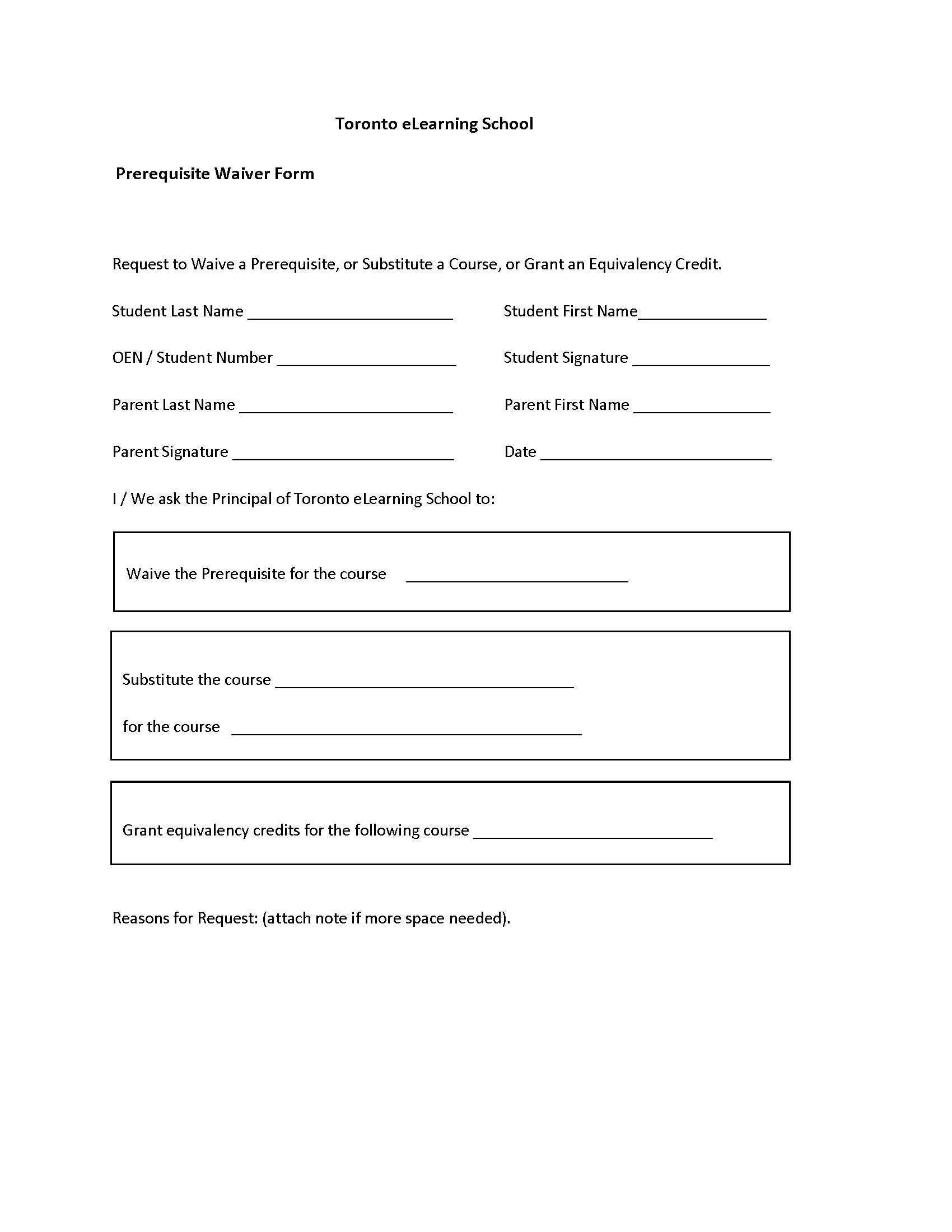
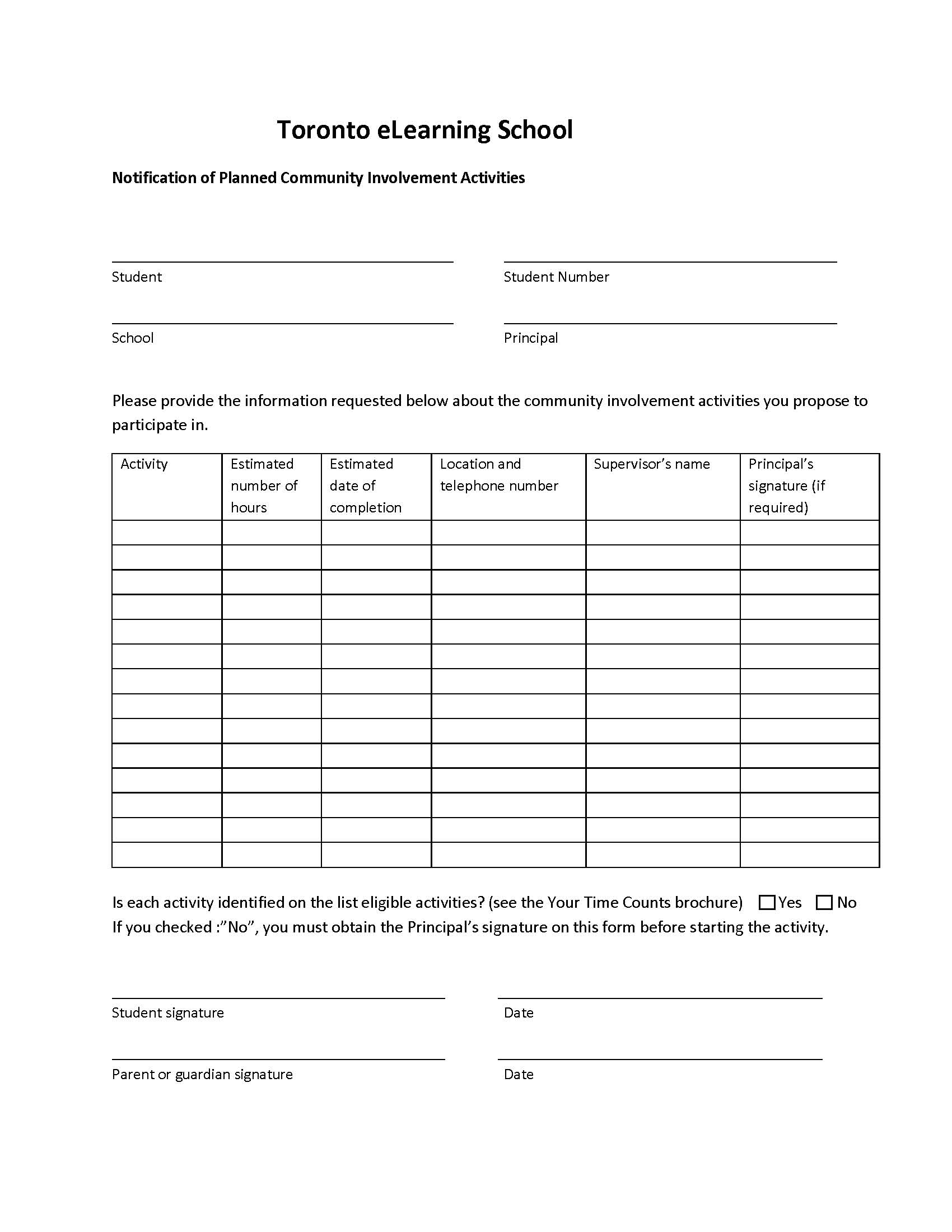
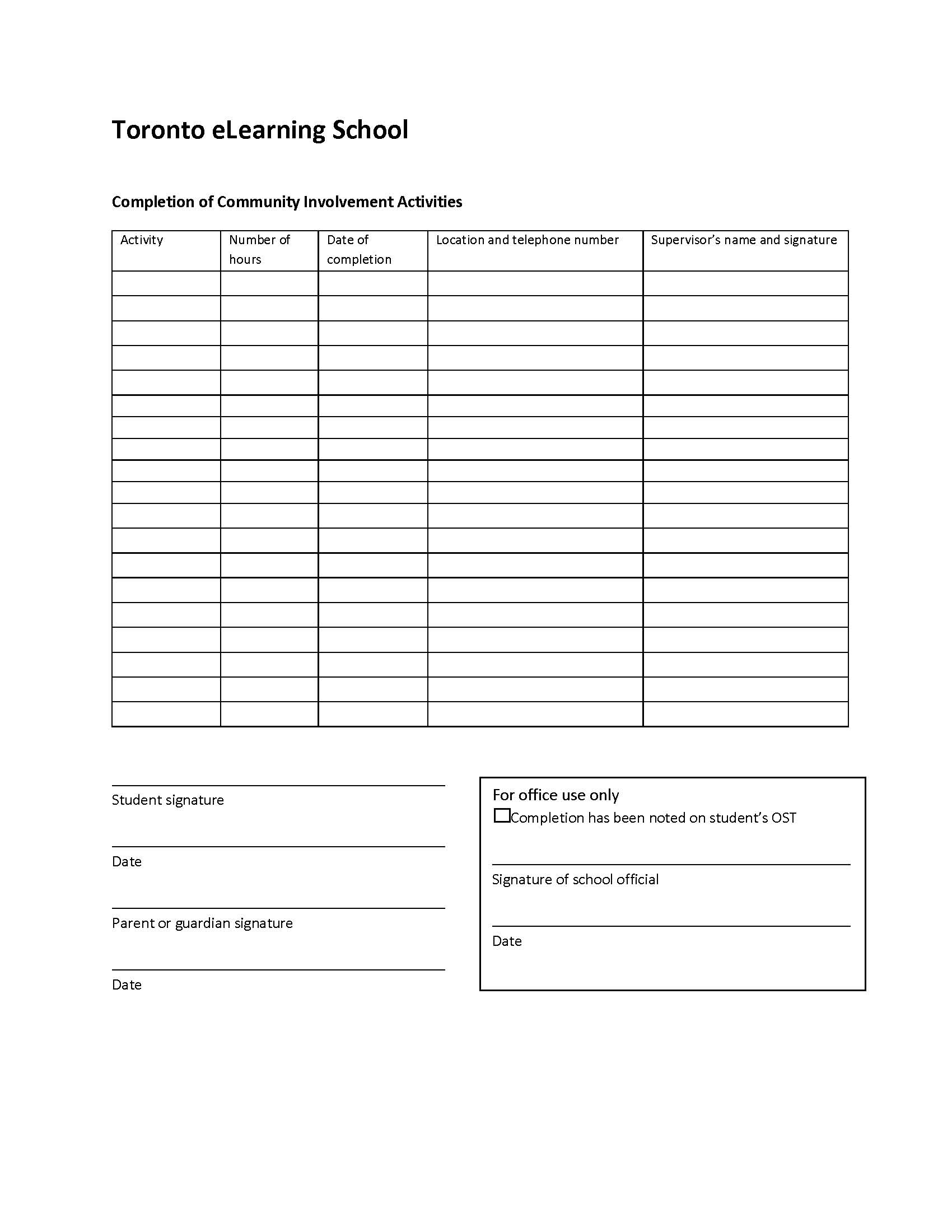
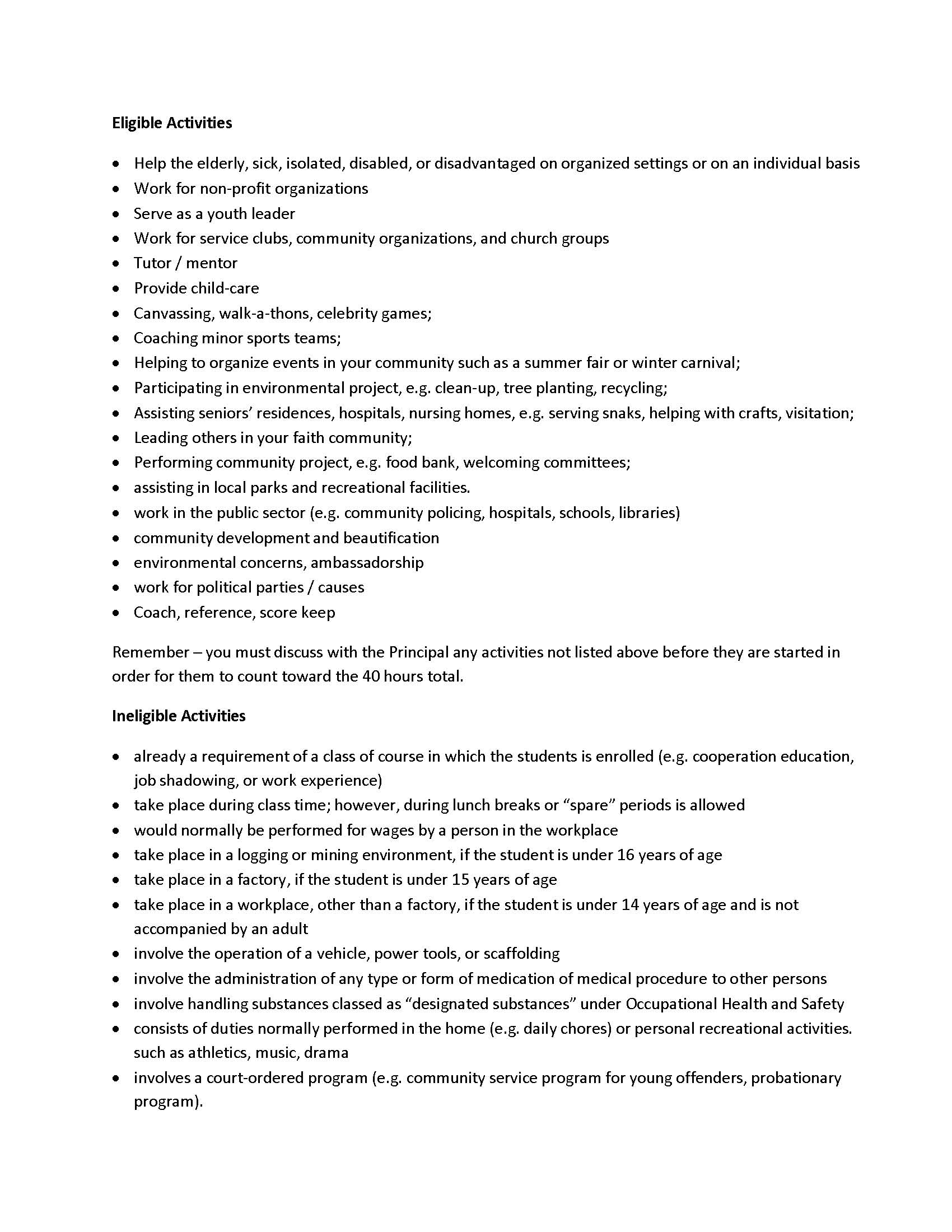
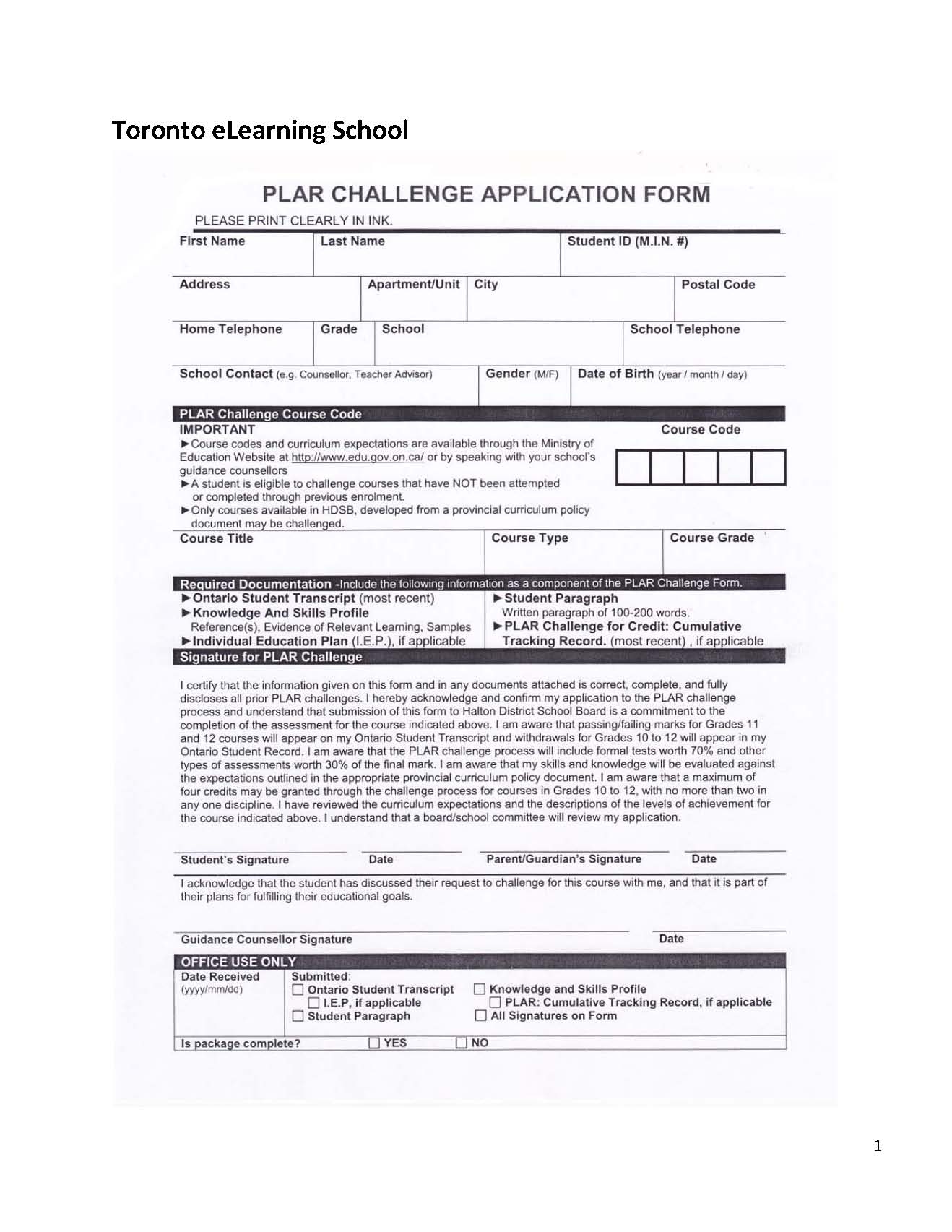
Substitution for a Compulsory Course Form

Consent to Access the Ontario Student Record (OSR) Form


 "Hey, Rebecca, Thank you so much for your help. I don't think there is anyone in education who helped me more than you.
I got the final confirmation email and finally got into McMaster thank you for all your help.
I owe my success in university admission to you and Toronto eLearning School."
Hadi Khan, Life Science in McMaster University
"Hey, Rebecca, Thank you so much for your help. I don't think there is anyone in education who helped me more than you.
I got the final confirmation email and finally got into McMaster thank you for all your help.
I owe my success in university admission to you and Toronto eLearning School."
Hadi Khan, Life Science in McMaster University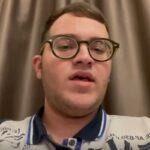 "My name is Kasra Zarbakhsh in Iran. I enjoyed my study at Toronto eLearnihng School with the kind staff. I suggest studying at eLearning School for those International or Canadian students who want to earn the OSSD.
I earned eight credits with eLearning School, got two university offers, and got an OSSD.
Warm regards to Principal & Vice-Principal of Toronto eLearning School, Mr. Bowyer & Ms. Wang."
Kasra Zarbakhsh, Business Administration of Legal Studies in Trent University.
"My name is Kasra Zarbakhsh in Iran. I enjoyed my study at Toronto eLearnihng School with the kind staff. I suggest studying at eLearning School for those International or Canadian students who want to earn the OSSD.
I earned eight credits with eLearning School, got two university offers, and got an OSSD.
Warm regards to Principal & Vice-Principal of Toronto eLearning School, Mr. Bowyer & Ms. Wang."
Kasra Zarbakhsh, Business Administration of Legal Studies in Trent University. "Hello miss, I have got my marks. Thank you so much at the end. you helped me a lot with this course. Your feedbacks were very effective to me.
I got many experiences with this. I really appreciate your kindness to refer my mails and reply them all and give feedbacks for my resubmitted assignments as well.
Lucky to have a teacher like you miss. Thank you so much and wish your future works with my best."
Naveen Srimal Kandamulla, Medicine in Manipal Medical University
"Hello miss, I have got my marks. Thank you so much at the end. you helped me a lot with this course. Your feedbacks were very effective to me.
I got many experiences with this. I really appreciate your kindness to refer my mails and reply them all and give feedbacks for my resubmitted assignments as well.
Lucky to have a teacher like you miss. Thank you so much and wish your future works with my best."
Naveen Srimal Kandamulla, Medicine in Manipal Medical University I am writing to express my deepest gratitude for your unwavering support and guidance throughout my academic journey with eLearning School.
Your dedication and expertise have been instrumental in my success in the course, and I cannot thank you enough for your invaluable contributions.
Thank you for being an exceptional educator at eLearning School and for making a positive impact on my life. I wish you continued success and fulfillment in your teaching career.
With utmost respect and gratitude, Zaid Hassan
I am writing to express my deepest gratitude for your unwavering support and guidance throughout my academic journey with eLearning School.
Your dedication and expertise have been instrumental in my success in the course, and I cannot thank you enough for your invaluable contributions.
Thank you for being an exceptional educator at eLearning School and for making a positive impact on my life. I wish you continued success and fulfillment in your teaching career.
With utmost respect and gratitude, Zaid Hassan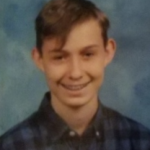 "Dear Rebecca, Thank you very much for attaching Michael's OSSD and transcript.
Michael has received all his offers from Ryerson University, York University, University of Toronto and Mississauga, U of T.
We would also like to thank you for your wishes. We are very proud of Michael and his accomplishments! Thank you once again."
Anna k., ASSISTANT REGISTRAR, VICTORIA COLLEGE IN THE UNIVERSITY OF TORONTO
"Dear Rebecca, Thank you very much for attaching Michael's OSSD and transcript.
Michael has received all his offers from Ryerson University, York University, University of Toronto and Mississauga, U of T.
We would also like to thank you for your wishes. We are very proud of Michael and his accomplishments! Thank you once again."
Anna k., ASSISTANT REGISTRAR, VICTORIA COLLEGE IN THE UNIVERSITY OF TORONTO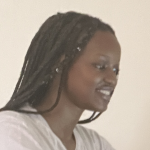 "Dear Rebecca, hope you are doing well.
I am taking this opportunity to thank you so much for the accompaniment, advise and the push done on Williane 's during her studies at Toronto eSchool. It was so benefic to her as now, she fitted very well into the University system... she started with 2 courses and has succeeded with a grade of B+ and A.... she promised to get A+ moving forward... at least, she started with good marks compared the way I was so so much worried about her performance. I have a confident she will be able to finish her studies withing the 4 academic years.
Again, find my sincere gratitude for the journey and support from your side; I will never forget about your advise, push, reminders, mails.... All to get Williane succeed her Grade 12. You are very professional and I m thank God I found a such professional and parent teacher. Remain blessed."
Honorine N., Procurement Manager, United Nations Children's Fund (UNICEF)
"Dear Rebecca, hope you are doing well.
I am taking this opportunity to thank you so much for the accompaniment, advise and the push done on Williane 's during her studies at Toronto eSchool. It was so benefic to her as now, she fitted very well into the University system... she started with 2 courses and has succeeded with a grade of B+ and A.... she promised to get A+ moving forward... at least, she started with good marks compared the way I was so so much worried about her performance. I have a confident she will be able to finish her studies withing the 4 academic years.
Again, find my sincere gratitude for the journey and support from your side; I will never forget about your advise, push, reminders, mails.... All to get Williane succeed her Grade 12. You are very professional and I m thank God I found a such professional and parent teacher. Remain blessed."
Honorine N., Procurement Manager, United Nations Children's Fund (UNICEF)